Organic modern interior design marries crisp contemporary silhouettes with nature’s calming textures, creating spaces that feel both current and timeless. By layering raw materials — think oak beams, sculptural stone, woven fibers, and living greenery — homeowners gain the wellness perks of biophilic design alongside streamlined functionality. Below, you’ll find 25 idea-packed paragraphs (each ~100 words) that spotlight practical ways to bring this hybrid style home, from statement architecture to the smallest styling touch.
1. Showcase Structural Timber Beams
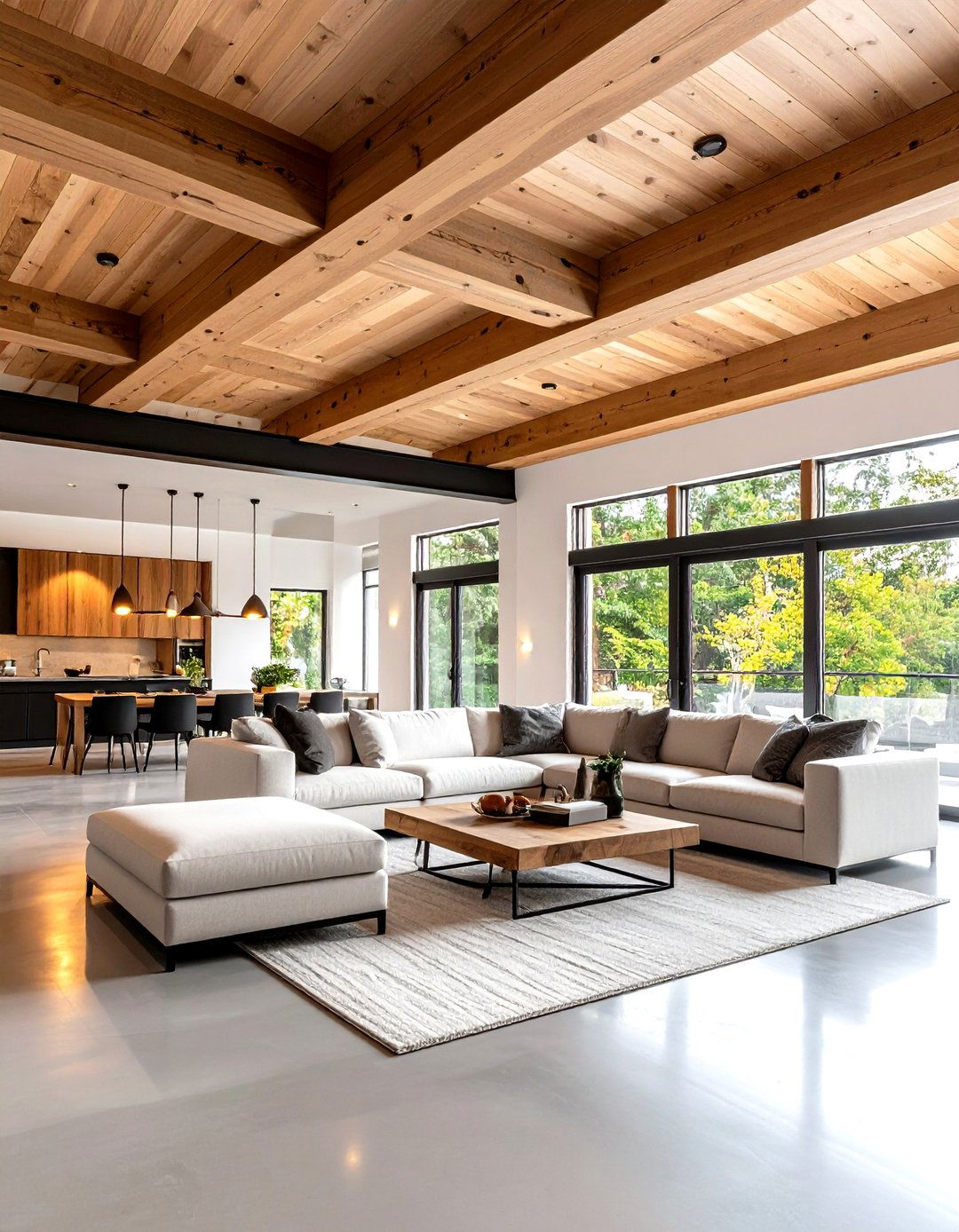
A ceiling laced with exposed oak or reclaimed-pine beams grounds organic modern interior design in authenticity while adding visual rhythm overhead. Timber softens minimalist planes, absorbs sound, and complements polished concrete or drywall with warmth. Designers such as Amber Lewis often lime-wash walls beneath beams to heighten the contrast between rustic texture and sleek surfaces, letting light dance across the grain for museum-like impact. Because the beams carry natural oils, they patinate gracefully — meaning less upkeep than painted trim and more character over time. Pair them with matte-black fixtures to keep the look firmly in the present.
2. Grow a Living Green Wall for Wellness
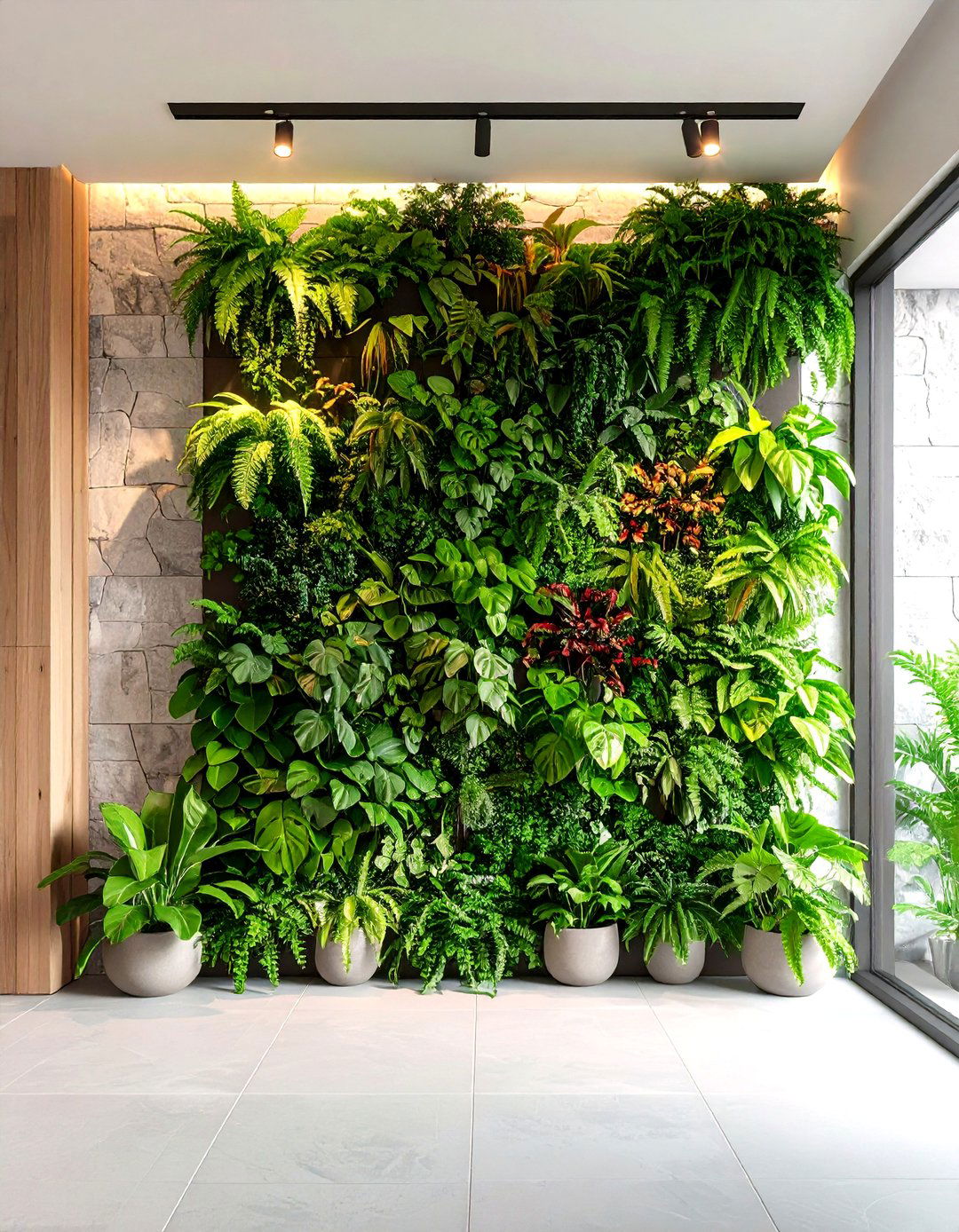
Few upgrades deliver a health boost as instantly as a vertical plant wall. Studies show living walls improve indoor air quality, regulate humidity, and lower stress — core goals of organic modern interior design. Modular panel systems allow cascading ferns, pothos, or herbs to thrive on almost any interior surface, bringing biophilic color without stealing floor space. Passive installations add acoustic dampening; active walls tied into HVAC even purify recirculated air. Keep irrigation lines hidden behind stone or plaster cladding so technology fades and foliage shines.
3. Soften Lines with Curved, Cloud-Like Furniture
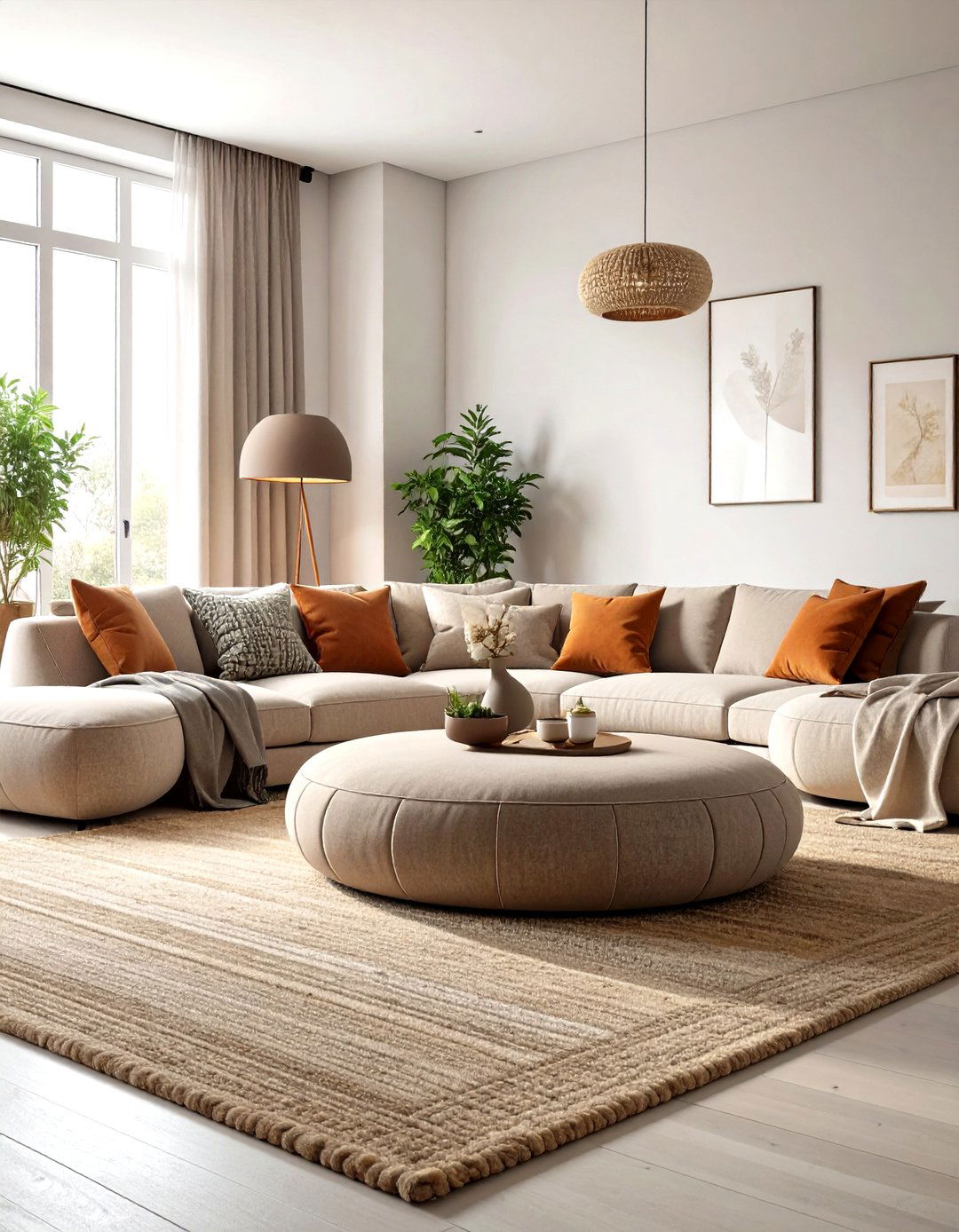
Unlike rigid mid-century silhouettes, today’s organic modern interior design favors plush pieces with sweeping edges. Curved sofas, pill-shaped ottomans, and waterfall benches break up rectilinear rooms and invite relaxed conversation. Upholster in nubby bouclé or buttery leather so shadows accentuate the sculptural profiles. The trend’s popularity stems from its ability to emulate natural forms while remaining unmistakably contemporary. Place a round sisal rug beneath a crescent sofa to echo the arc and buffer footfall.
4. Carve Out Japandi-Style Minimalist Corners
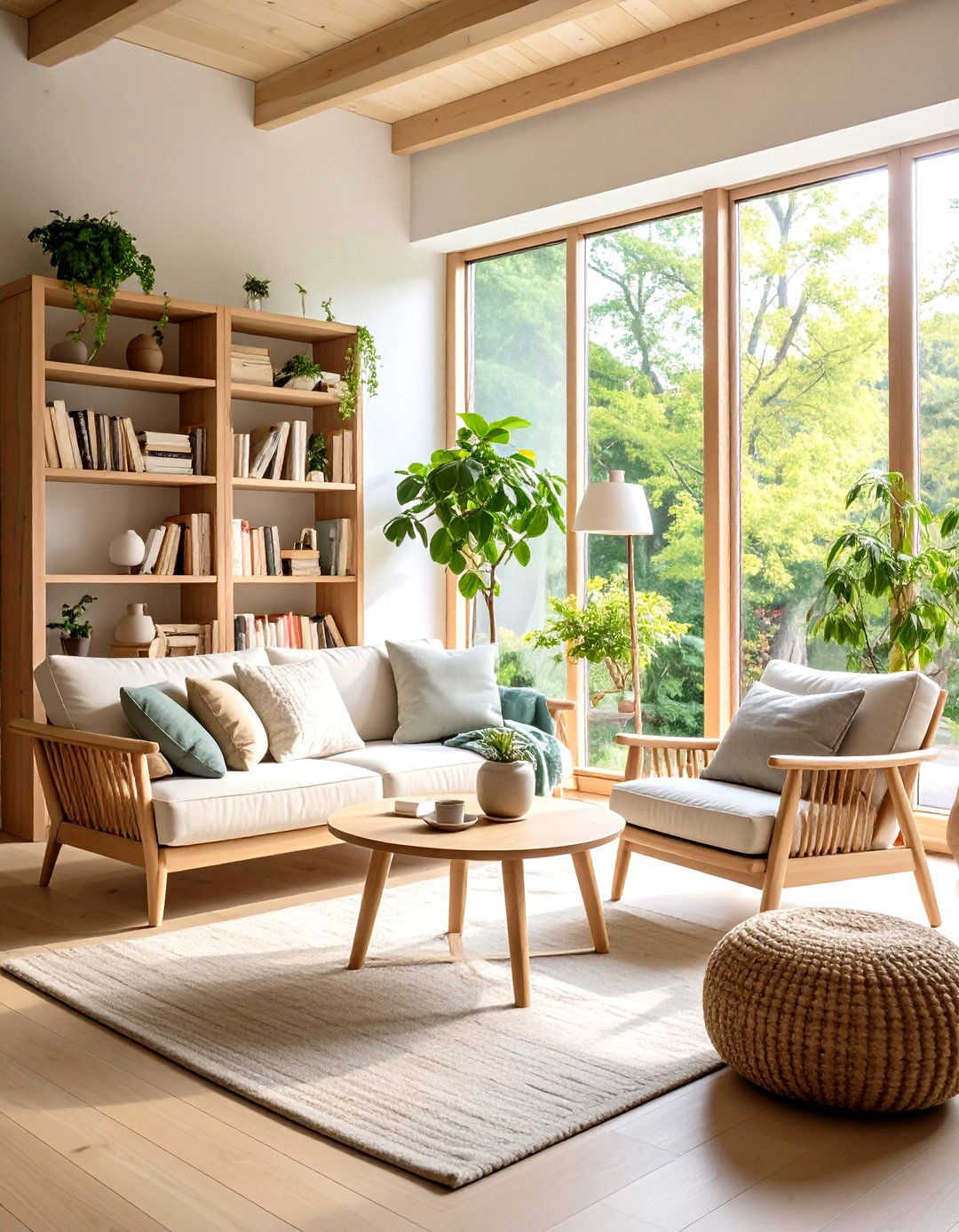
Japandi — a fusion of Japanese wabi-sabi and Scandinavian hygge — slots effortlessly into organic modern interior design. Its restrained palettes, leggy furniture, and reverence for craftsmanship encourage slower living and open sight-lines. Keep surfaces uncluttered, use storage screens in ash or birch, and rely on one hero material — say pale oak — for continuity. The result feels airy rather than stark, proving that minimalism can still feel human.
5. Limewash Walls for Earthy Dimension
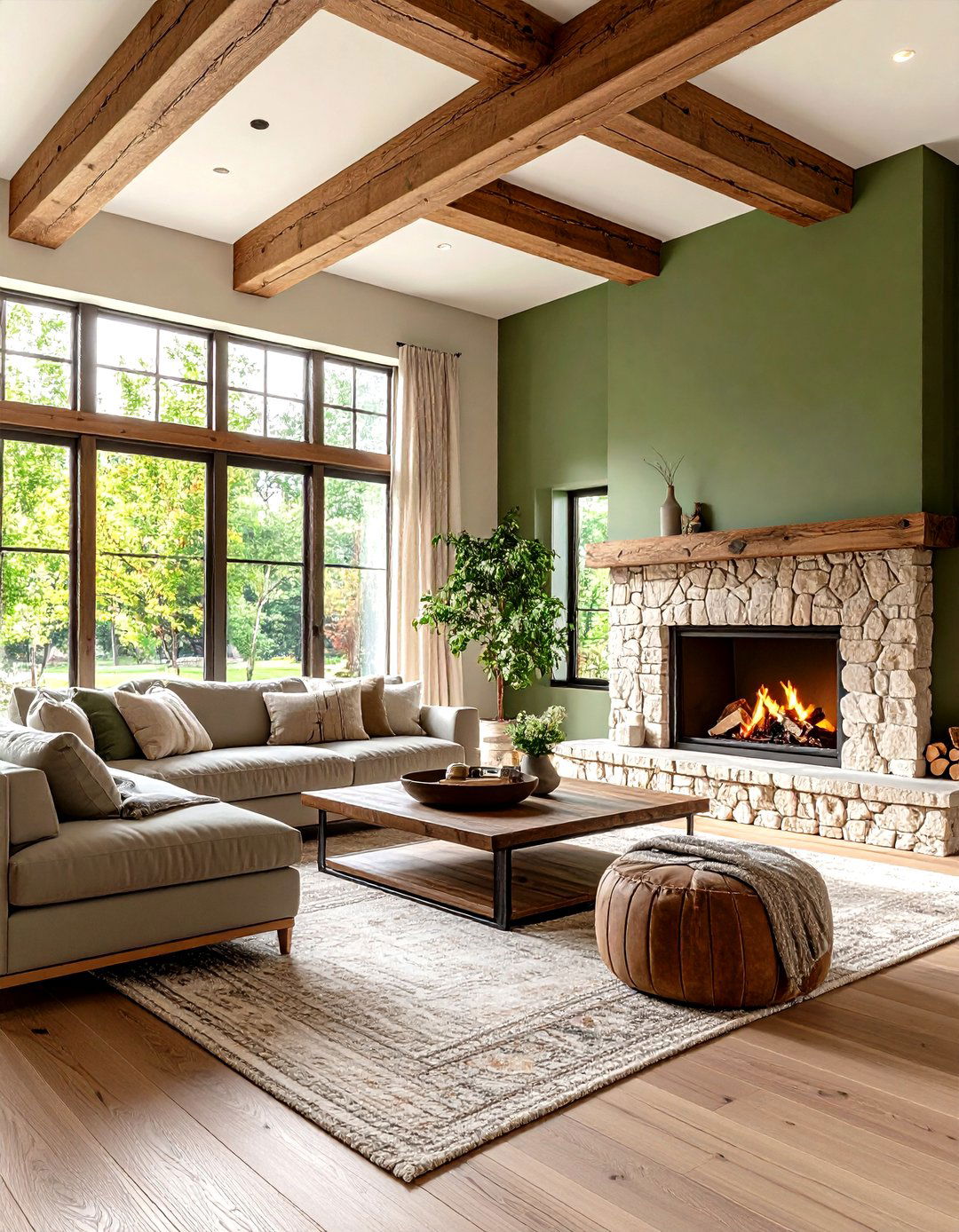
Lime-wash delivers the mottled depth of centuries-old plaster with none of the dust. Because pigment sits within — not atop — the finish, wall color will read softer throughout the day, adding movement to organic modern interior design. Combine with exposed beams or stone hearths and you’ll amplify textural layering without pattern overload. The coating’s high pH even acts as a natural antimicrobial, supporting healthier indoor climates.
6. Layer Neutral Textiles for Tactile Warmth
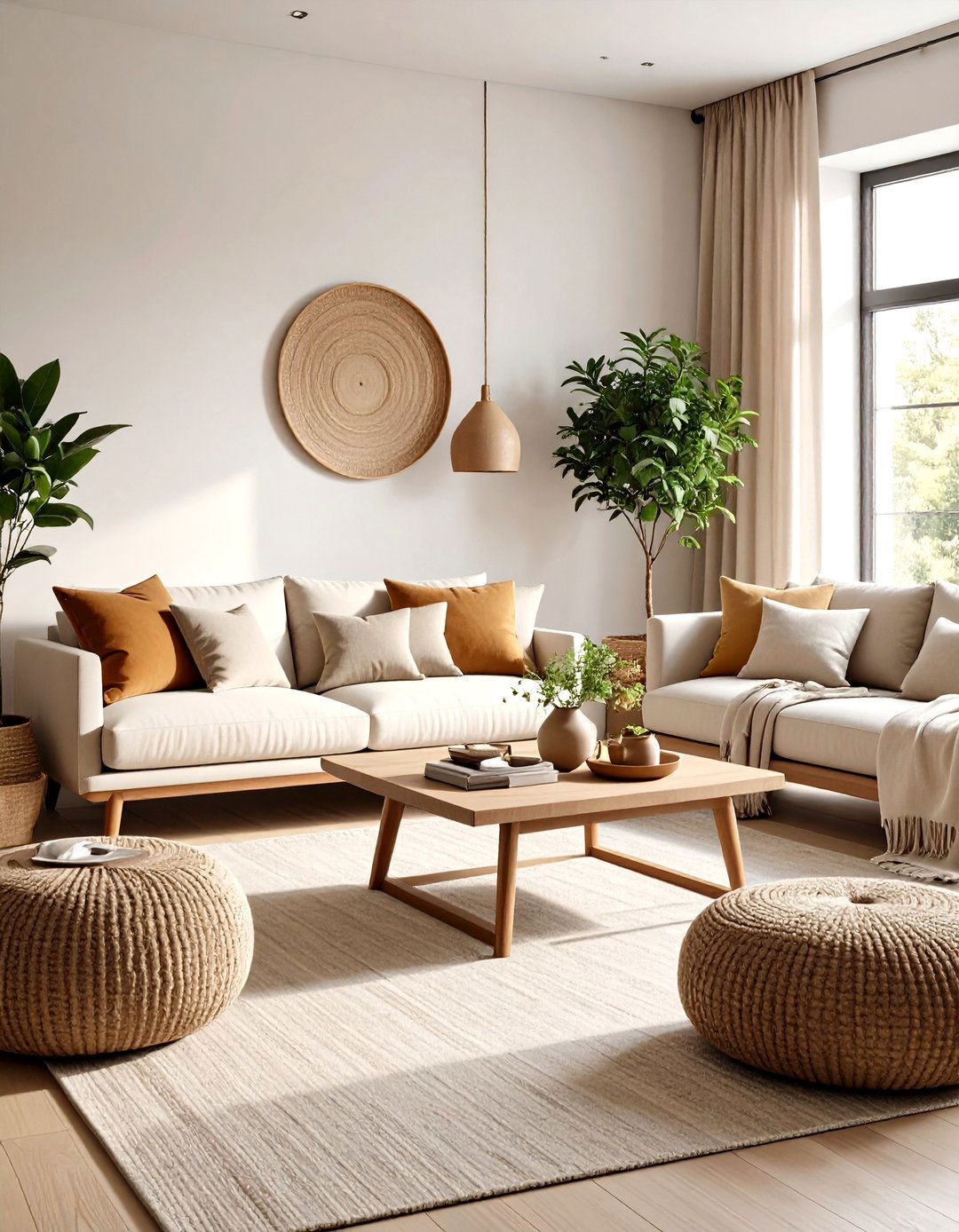
Organic modern rooms sparkle when cream, sand, and putty hues mingle across linen drapes, wool throws, and cotton-canvas cushions. Layering neutral textiles prevents monotony by playing up touch rather than color. Designers recommend mixing coarse jute with brushed flannel or chunky knits so sunlight reveals subtle tonal shifts. Finish with a spine of leather piping to echo other natural materials in the scheme.
7. Hang Sculptural Paper Lanterns for Ambient Glow
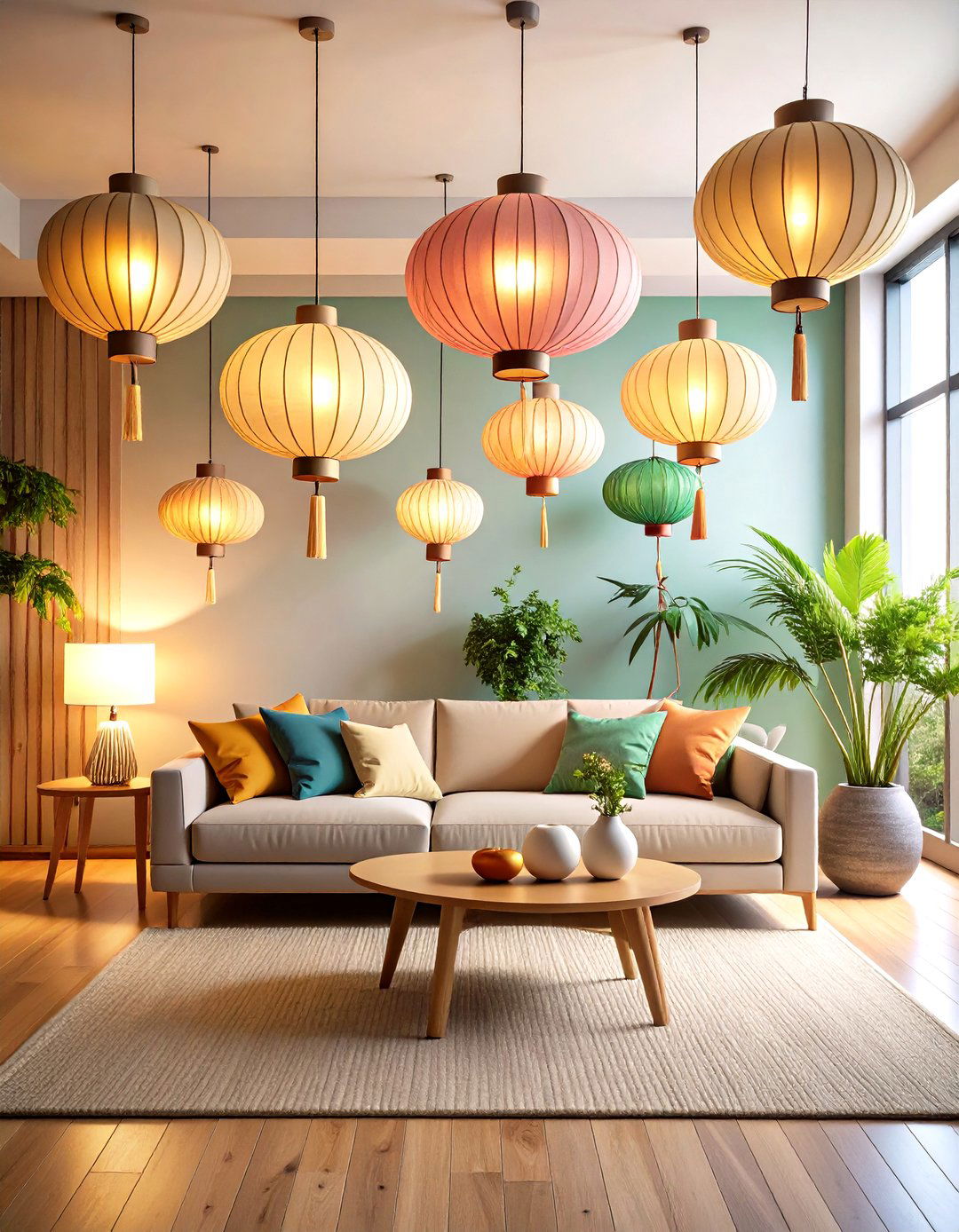
Isamu Noguchi’s Akari lamps epitomize the movement’s credo: artful yet humble, handmade yet modern. Their washi shades diffuse a candle-soft light that flatters skin tones and timber alike, turning ceilings into constellations after dusk. Today’s versions include floor or ceiling clusters, a cost-savvy swap for pricey chandeliers. Because lanterns fold flat, they’re renter-friendly and perfect for spur-of-the-moment refreshes.
8. Anchor Bathrooms with Stone Vessel Sinks
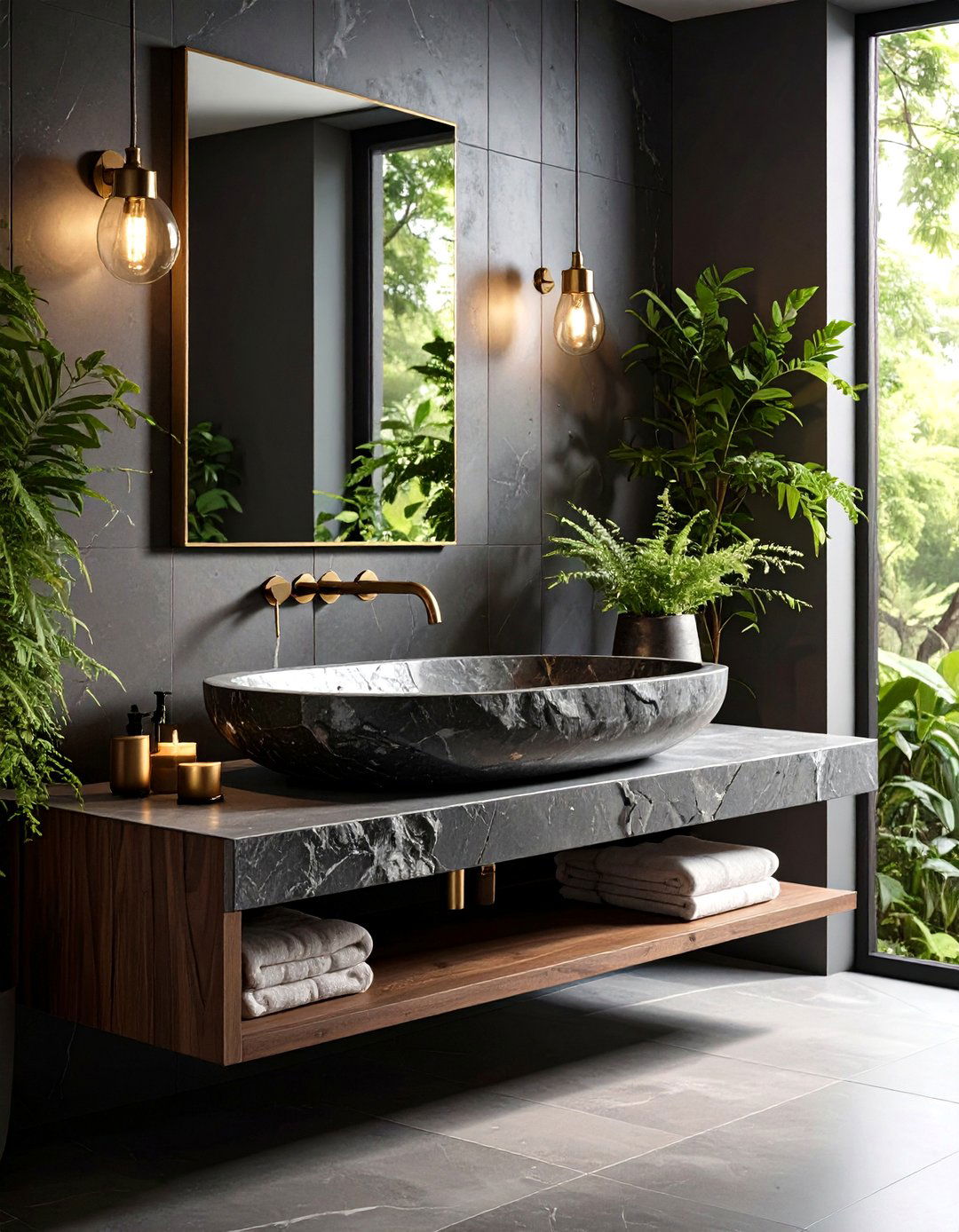
A hewn-marble or river-rock vessel sink serves as functional sculpture, instantly elevating bathroom rituals. The tactile stone ties water use back to its natural source, a key biophilic principle inside organic modern interior design. Pair with wall-mounted brass taps so the basin’s geometry remains unobstructed, and keep color schemes tonal — think charcoal sink against pale tadelakt — for quiet drama.
9. Try Seamless Tadelakt Showers
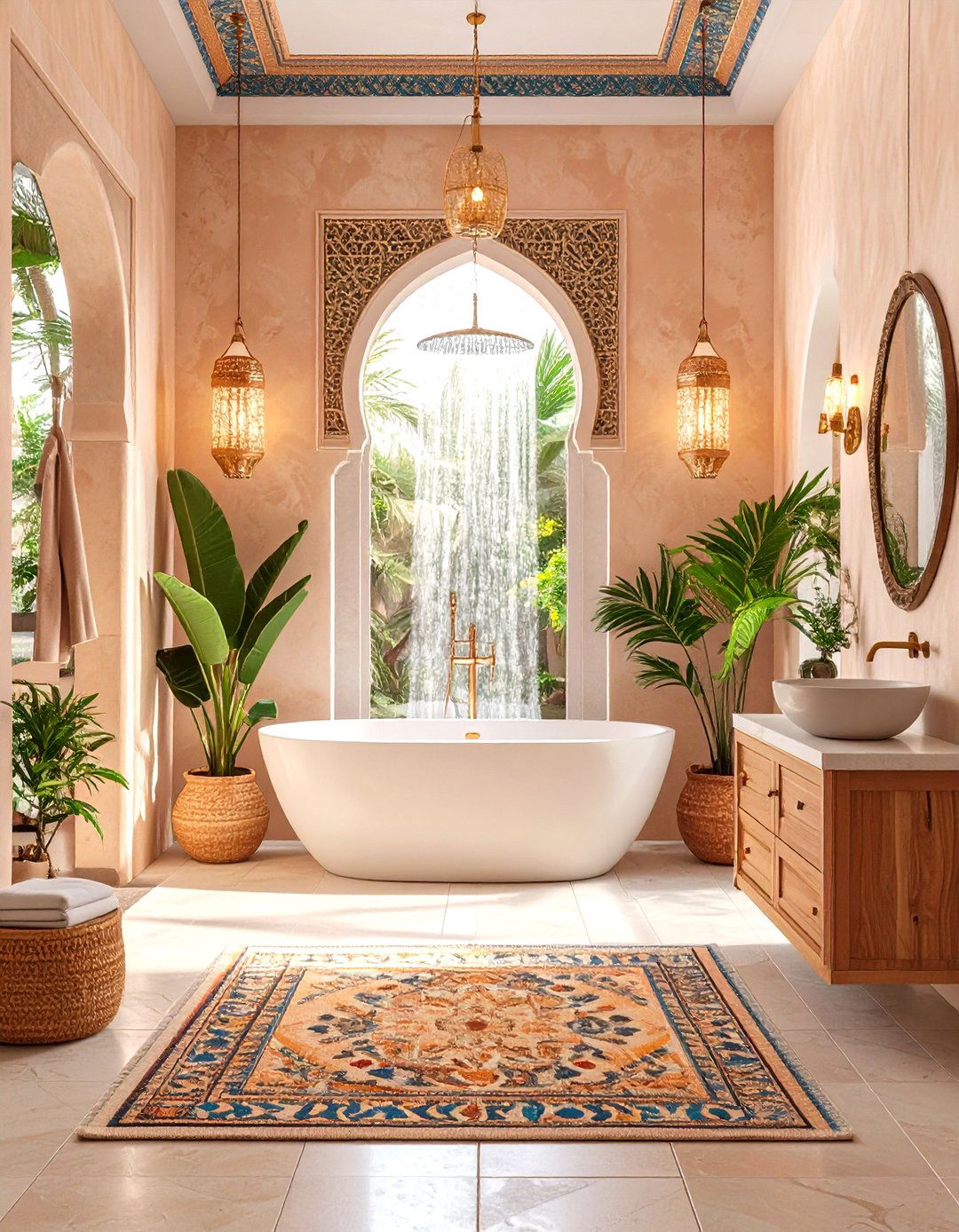
Moroccan tadelakt plaster wraps shower walls, benches, and niches in a waterproof, joint-free skin. Its buttery finish curves around corners, making small bathrooms feel spa-grade and expansive. Because tadelakt is lime-based, surface alkalinity deters mold — ideal for wet zones. Buff with olive-oil soap periodically to maintain a subtle satin sheen that compliments honed stone floors.
10. Cushion Steps with Sustainable Cork Flooring
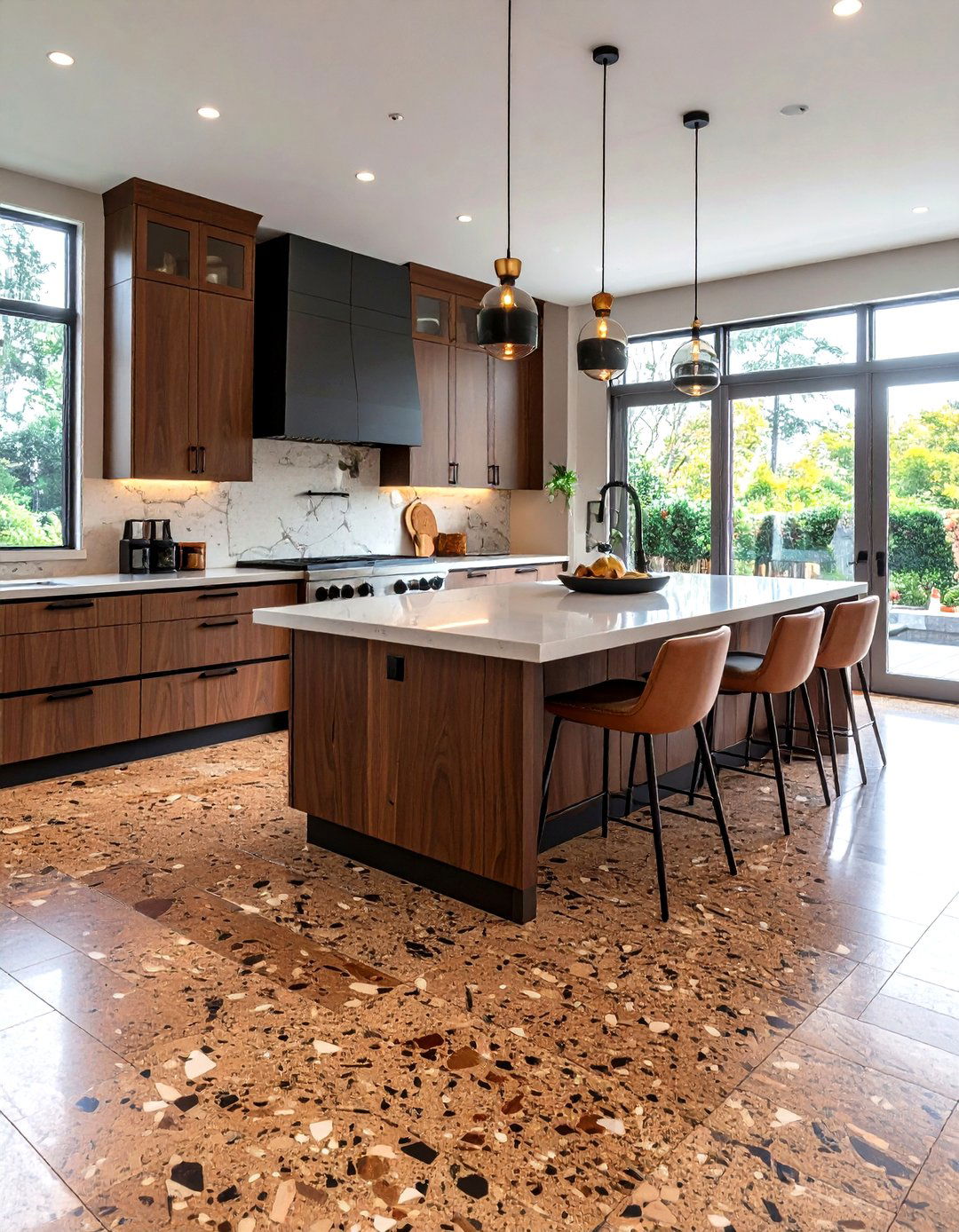
Cork’s cellular structure feels springy underfoot, reduces noise, and insulates against temperature swings — all while harvesting bark without felling the tree. Modern sealers protect against spills, so cork works beyond yoga rooms: consider it for kitchens where organic modern interior design meets relentless foot traffic. Pattern-pressed planks emulate terrazzo or herringbone but remain naturally antimicrobial.
11. Upholster with Hard-Wearing Hemp Fabrics
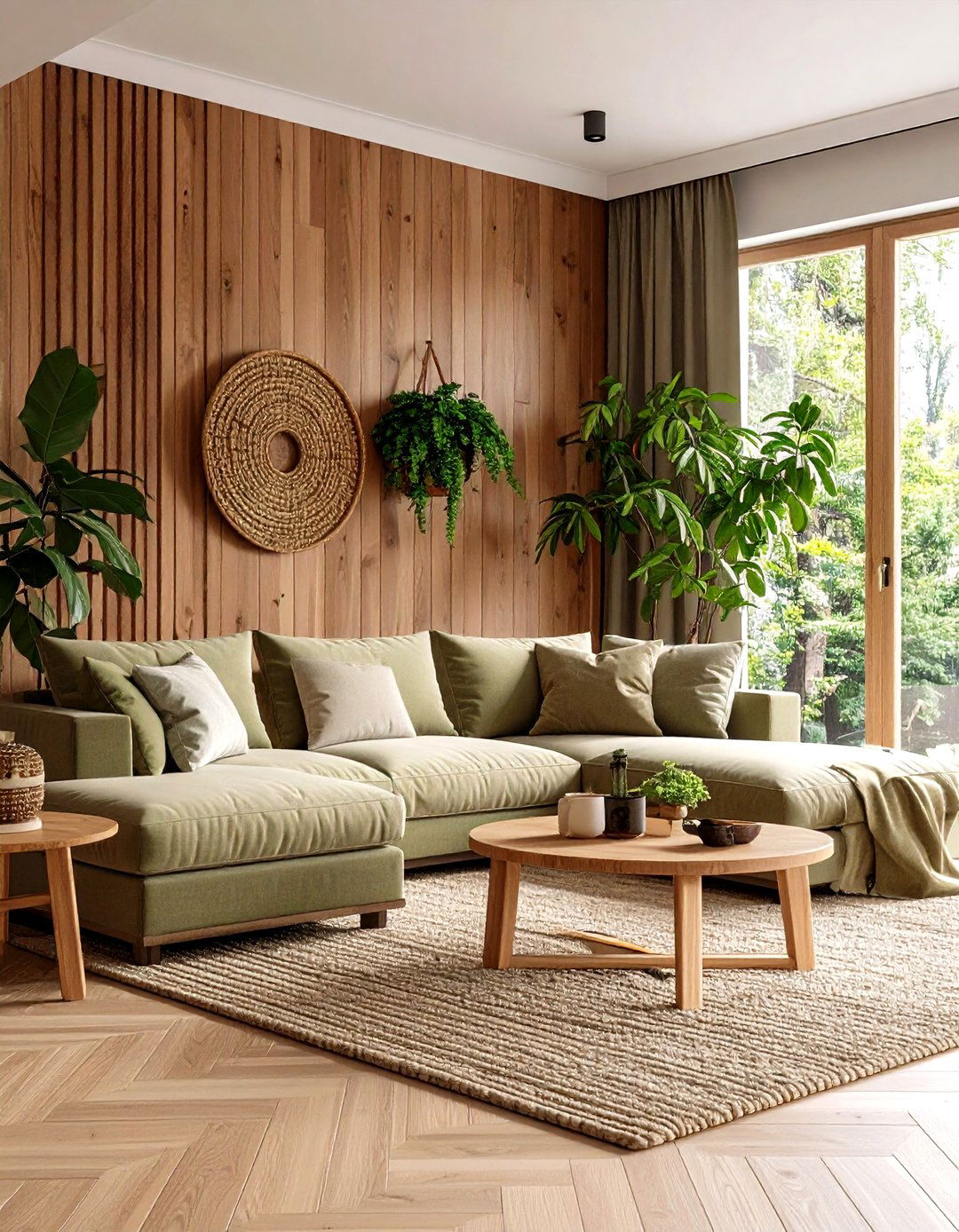
Hemp rivals linen for breathability yet outperforms it on abrasion, making it a savvy choice for family sofas. Its cultivation requires minimal water and no pesticides, aligning with eco-minded interiors. Weave choices span tight twills to chunky herringbones; natural dyes leave warm taupes and olive drabs that harmonize with wood tones.
12. Furnish with Reclaimed Wood to Tell a Story
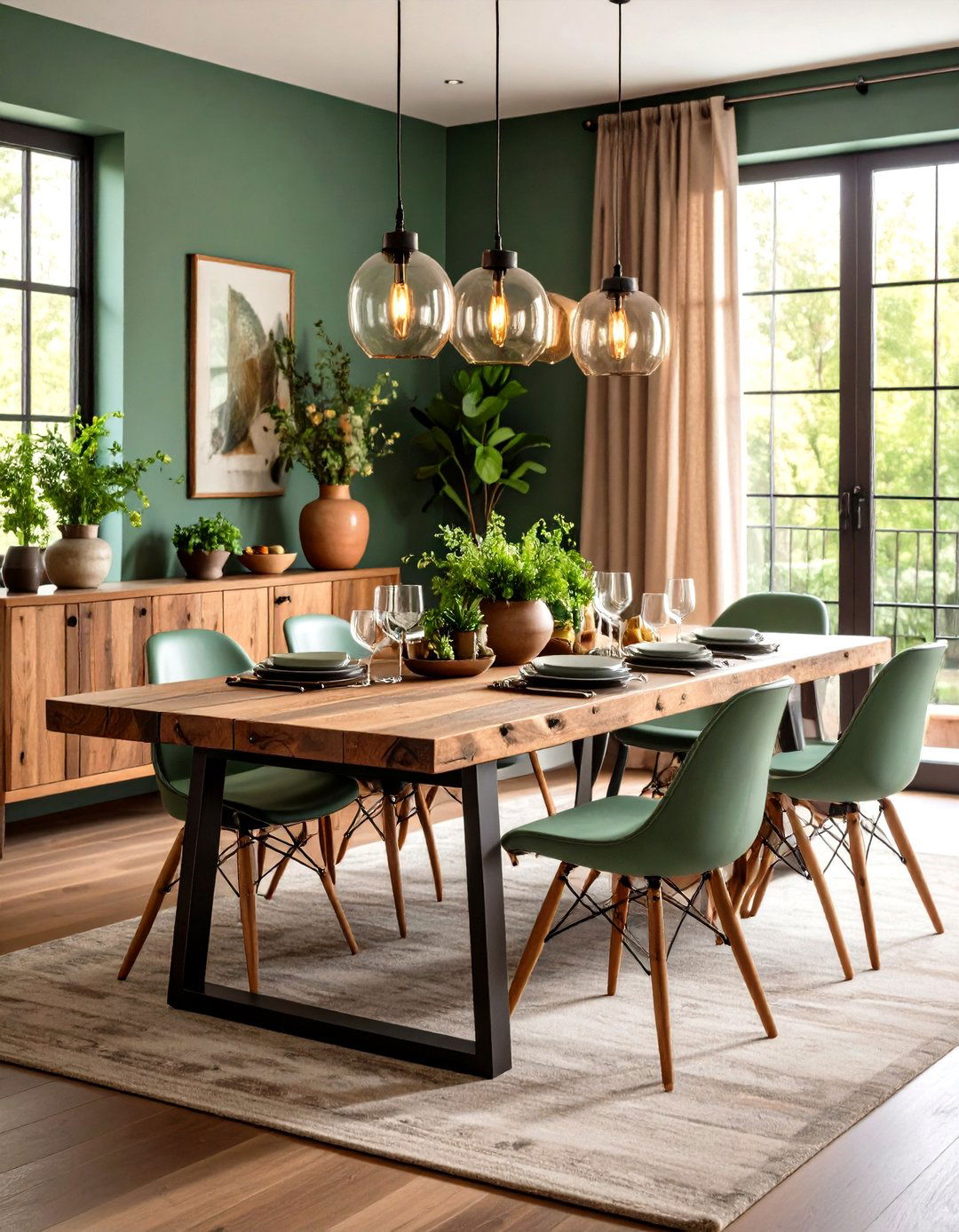
Tables hewn from factory joists or barn siding imbue organic modern interior design with history while slashing carbon footprints. The knots, nail holes, and weathered hues offer patina impossible to fake, and each imperfection sparks conversation. Seal tops in low-VOC hard-wax oil to highlight grain without plastic sheen. Paired with minimalist steel legs, the contrast feels utterly current.
13. Capture Daylight through Solar Tubes
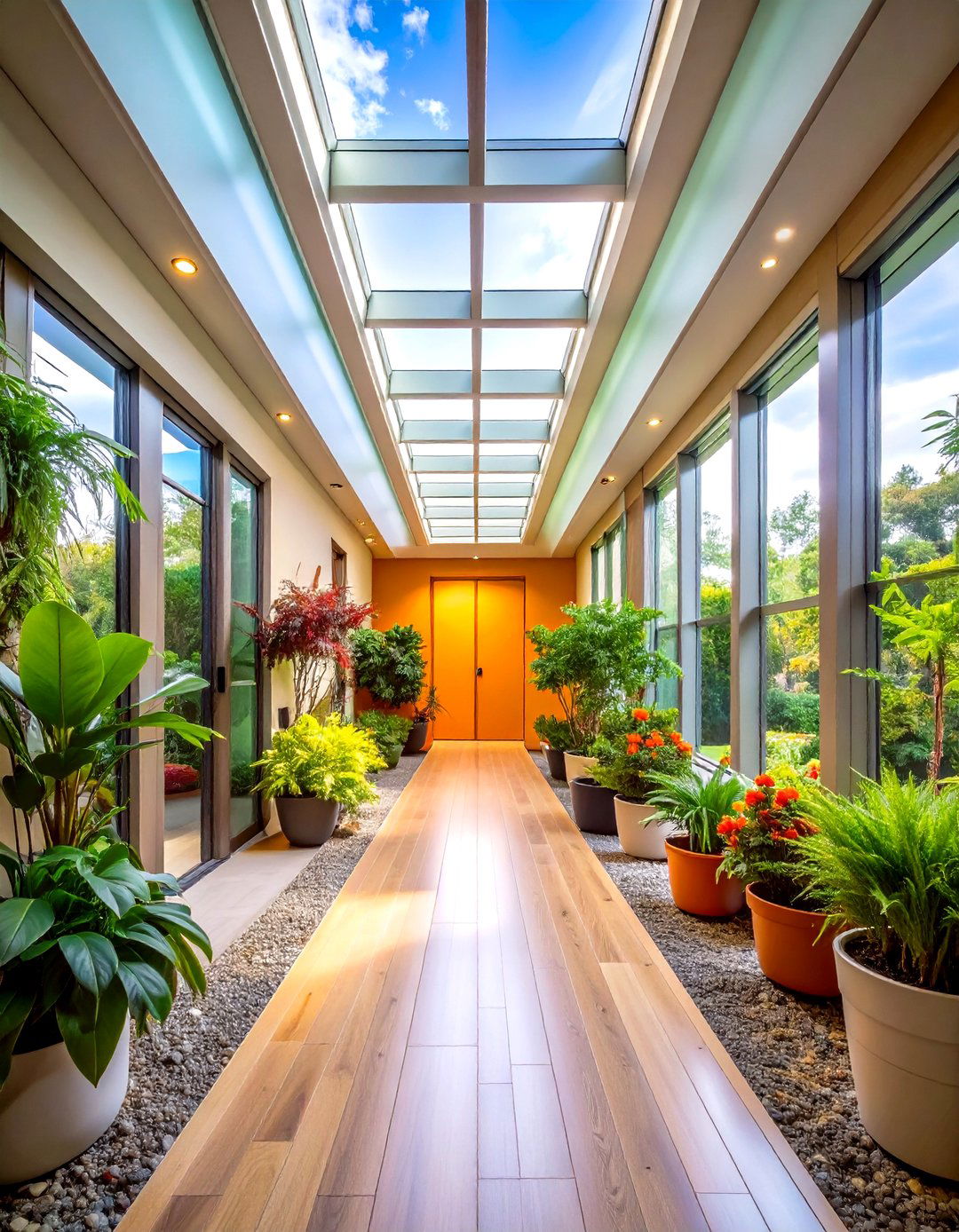
Tubular skylights funnel up to 99 percent of outdoor light into closets, hallways, or attics that windows can’t reach, reducing reliance on bulbs and lifting mood. Installation often fits between rafters, preserving roof integrity — a smart retrofit for renters of older homes chasing organic modern interior design’s hallmark brightness. Frosted diffusers temper glare so art and furniture fade evenly.
14. Warm the Palette with Terracotta Accents
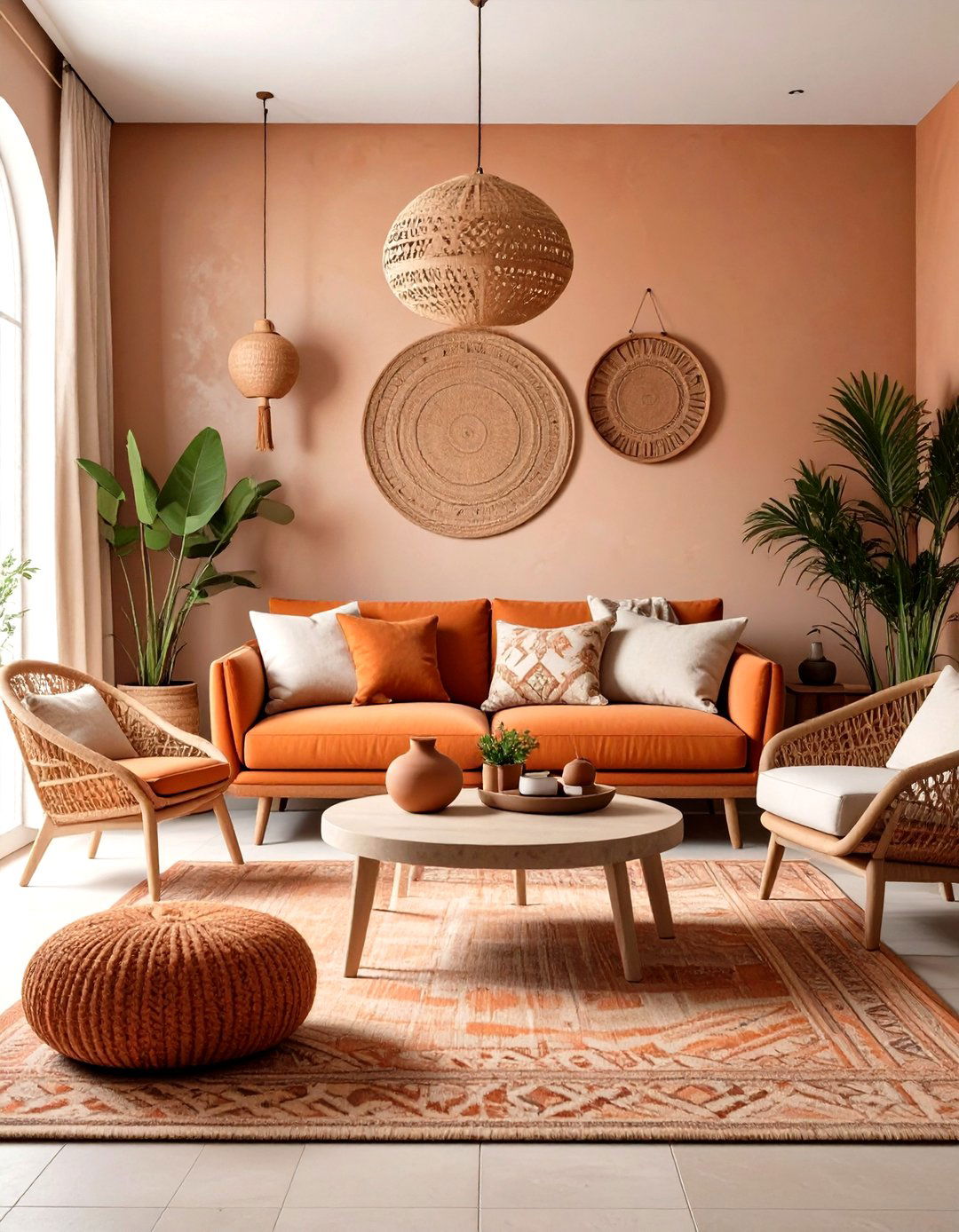
A single terracotta vase or clay tile backsplash injects sun-baked warmth into otherwise hushed rooms. Earth-pigment reds communicate comfort and root the space in nature’s geology. For 2025, designers pair clay hues with sage or ivory rather than stark white, echoing canyon landscapes without slipping into farmhouse clichés.
15. Mix Leather and Wool for Depth
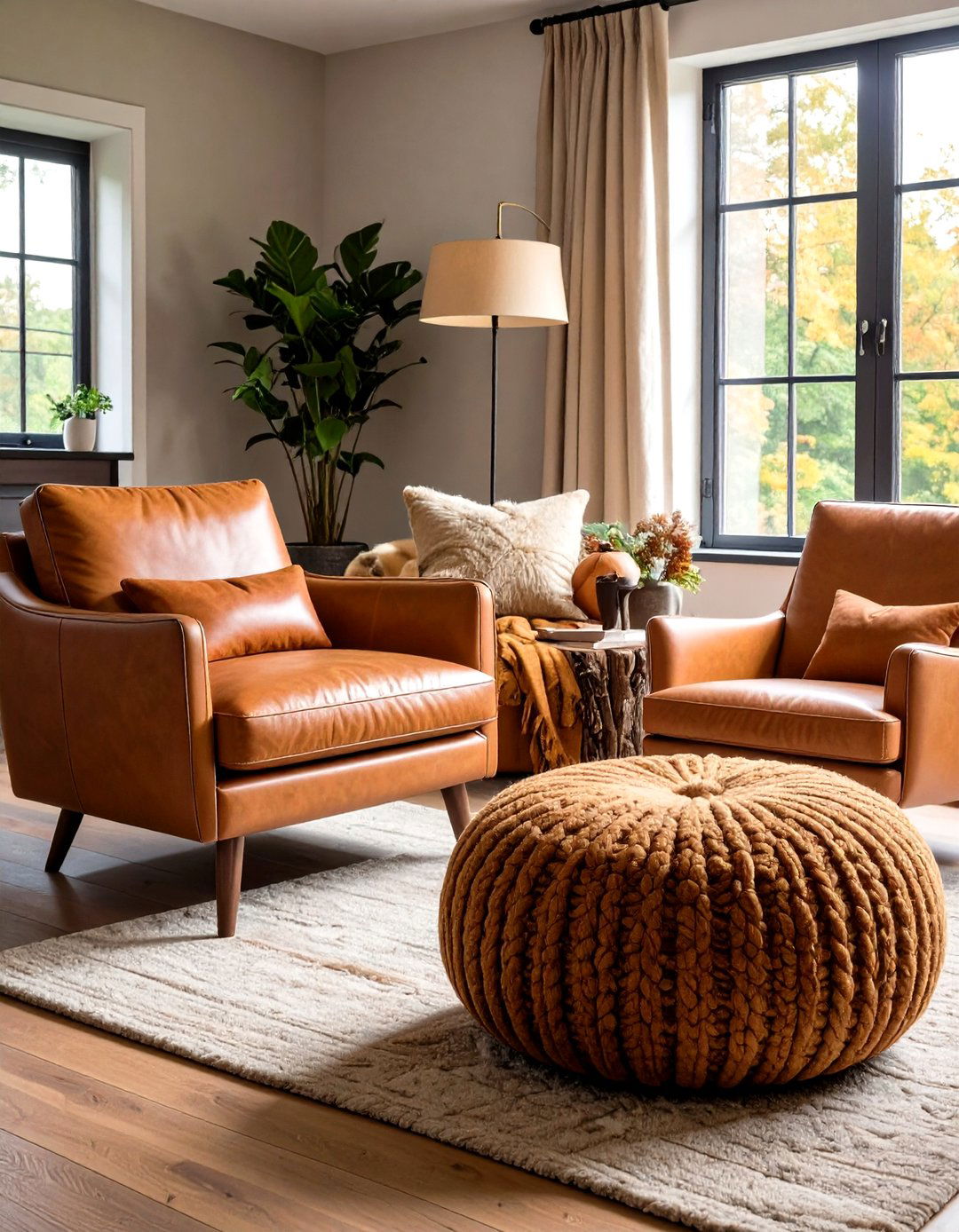
Contrast buttery saddle-tan leather chairs against chunky wool bouclé poufs to balance slick and soft. This textural pairing epitomizes organic modern interior design: refined yet earthy. Leather’s cool touch in summer offsets wool’s winter coziness, allowing rooms to flex seasonally without major redecorations. Keep forms simple so materials take center stage.
16. Cultivate an Indoor Herb Garden
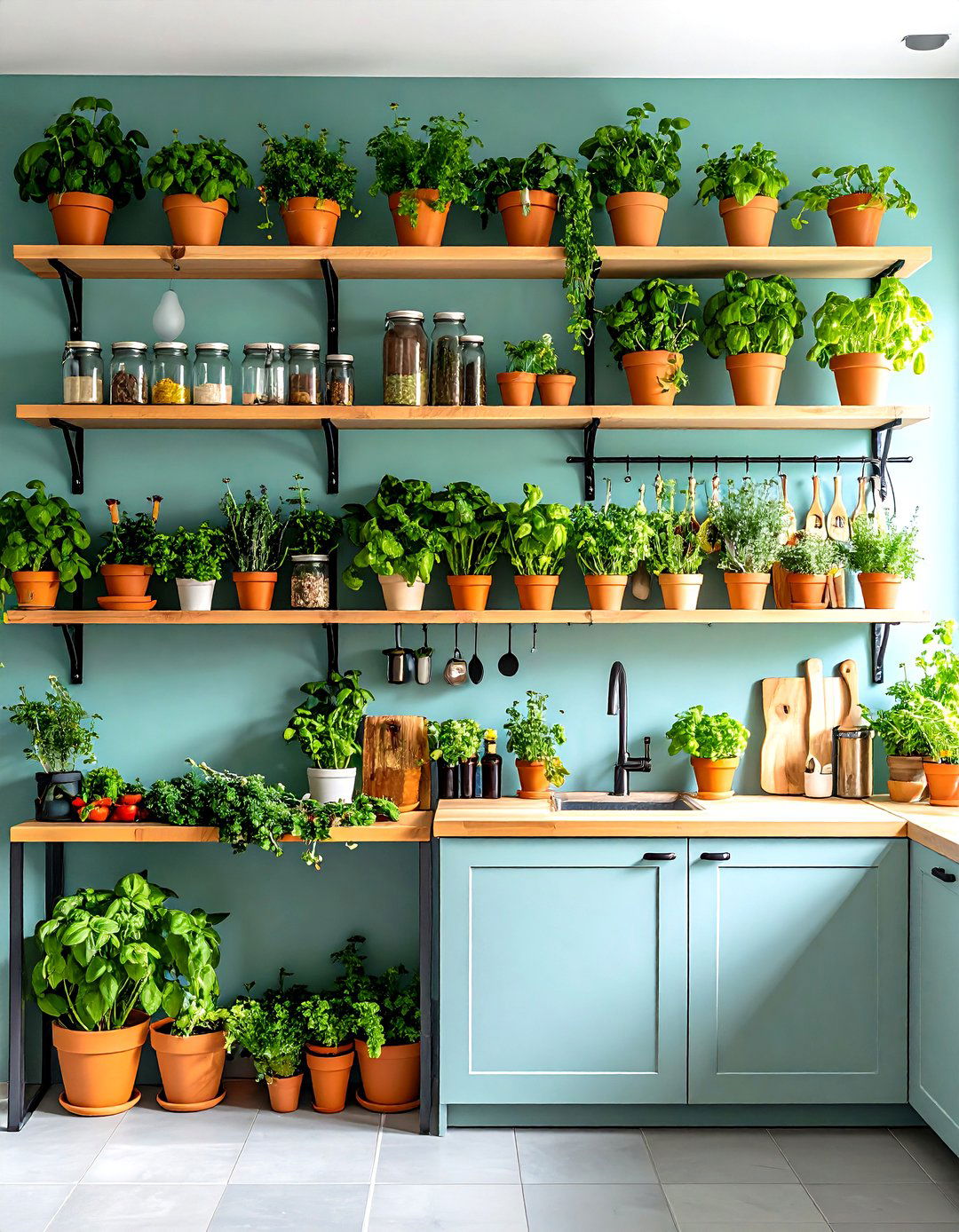
Fresh rosemary drifting from a countertop planter reinforces that organic modern interiors value function as much as aesthetics. Clever vertical racks mount mason jars or terracotta pots, turning blank backsplashes into edible art and cutting grocery trips. Self-watering planters keep upkeep minimal; just ensure herbs bask in south-facing windows or under LED grow strips.
17. Build a Wood-Framed Window Seat
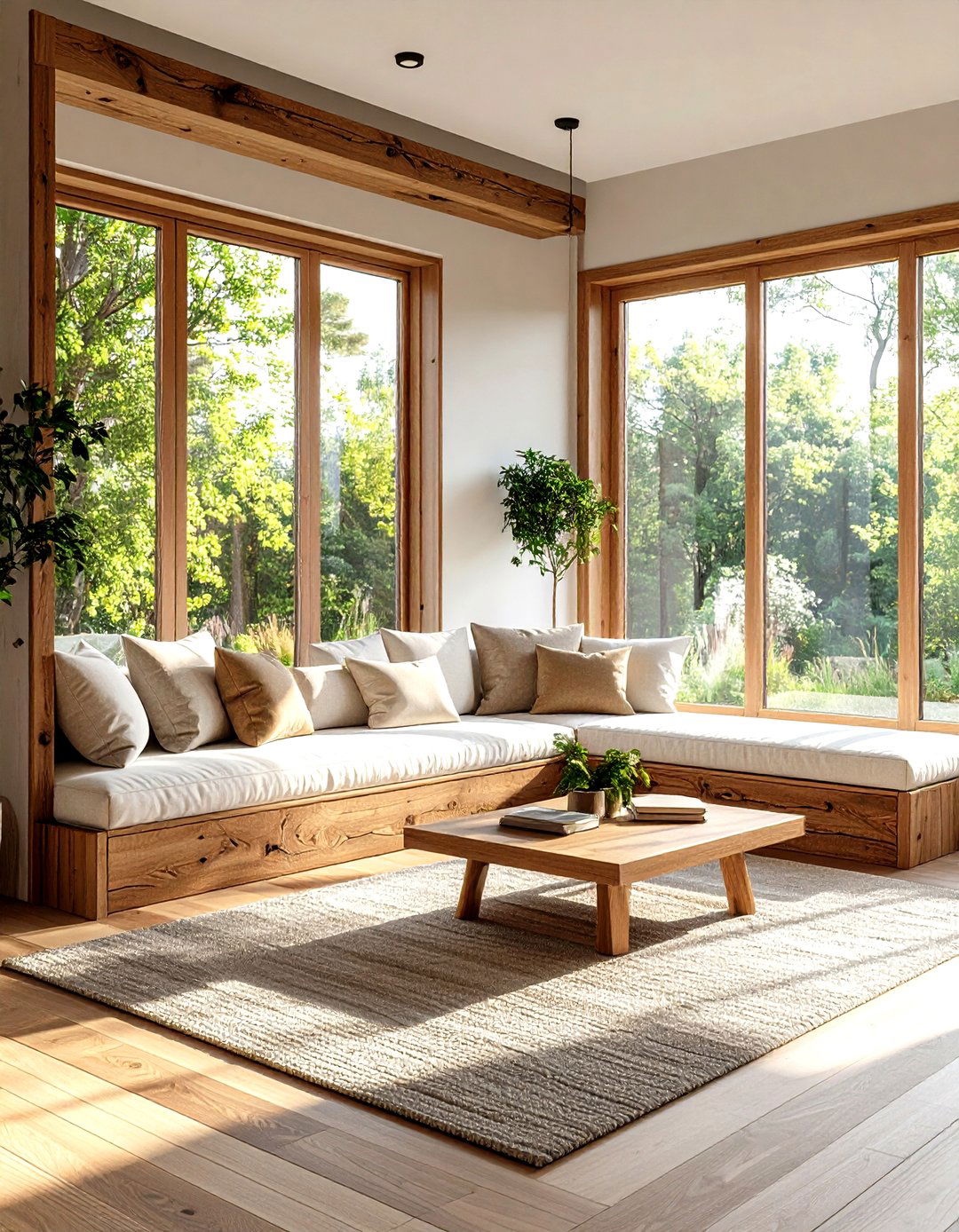
A built-in bench tucked below oversize glazing offers a sunlit nook for reading and storage. Choose rift-sawn oak fronts and feather cushions in neutral linens to maintain a slim profile. Integrated drawers hide blankets, letting surfaces stay clutter-free — a core tenet of organic modern interior design. Layer ripple-fold drapery for adjustable privacy without heavy valances.
18. Feature a Live-Edge Coffee Table
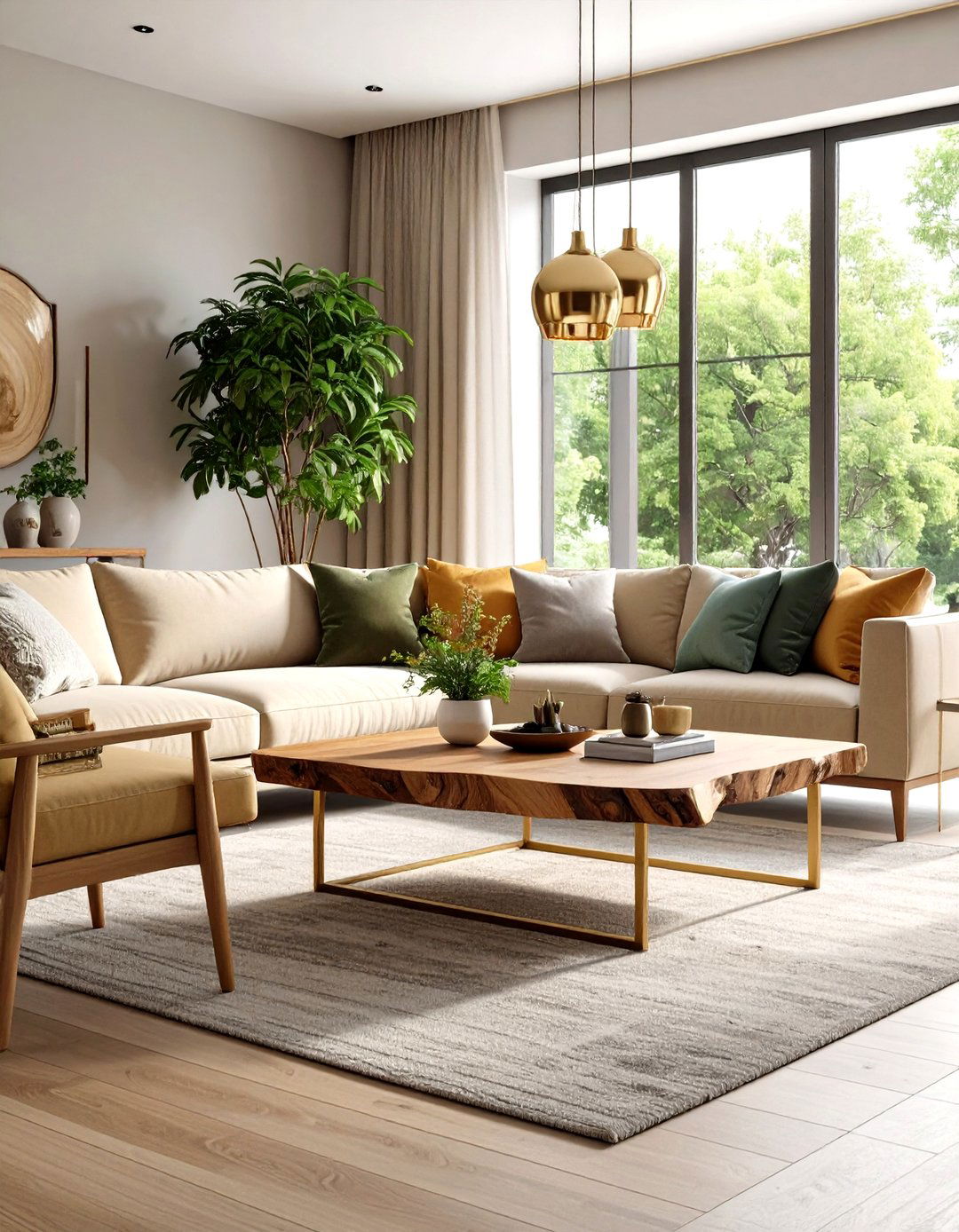
No two live-edge slabs share the same contour, so each piece acts as a bespoke sculpture anchoring a lounge. Sand and oil the top but leave bark-side voids for authenticity. Tapered brass or powder-coated steel legs provide needed visual lightness. The organic shape invites traffic to flow naturally around it, softening rigid floor plans.
19. Center the Room on a Stone Fireplace
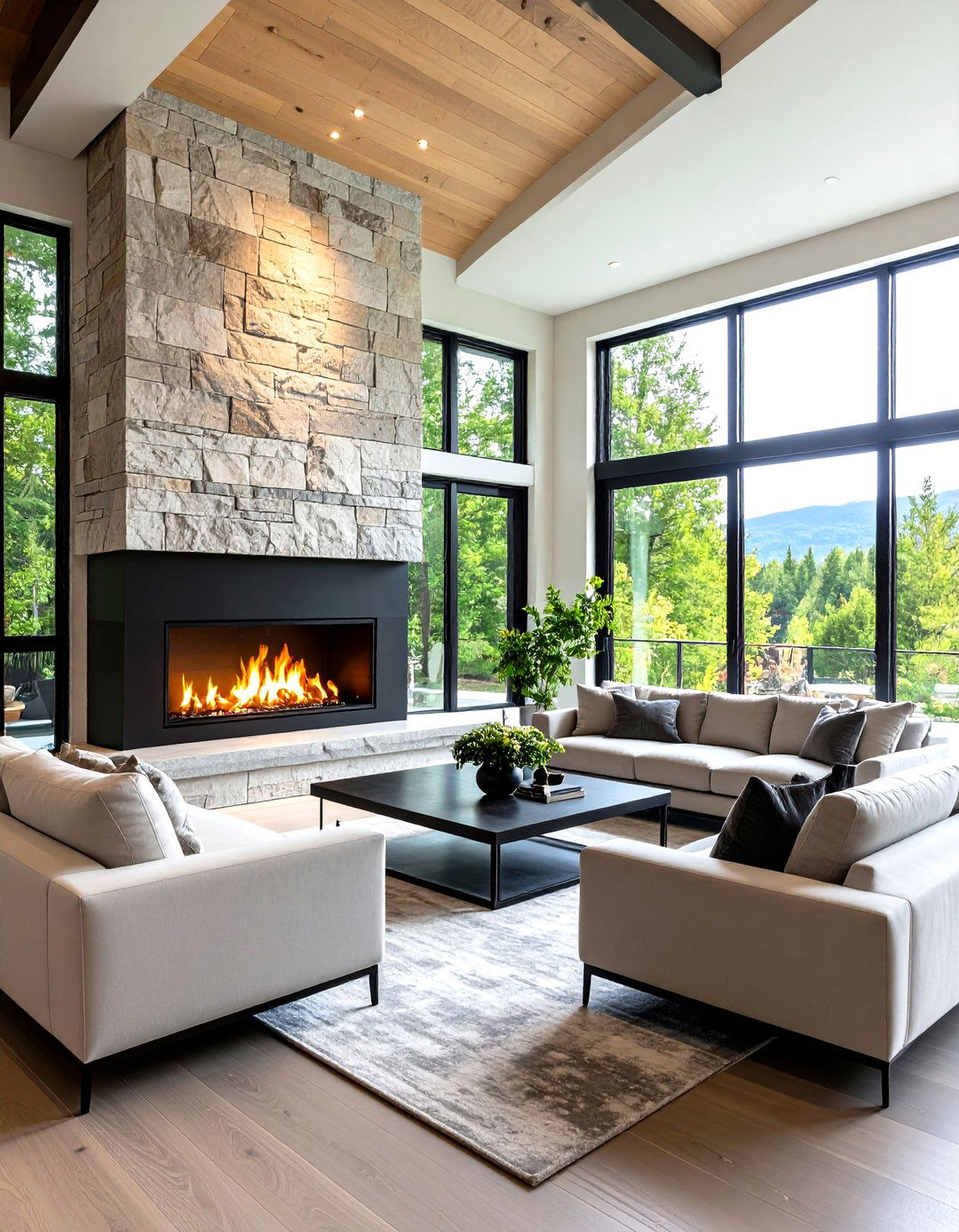
Whether clad in ledger limestone or rough-cut granite, a monolithic hearth introduces primal gravitas. Combine with slim black-steel mantels and concealed gas inserts to keep the silhouette crisp. Stone’s thermal mass absorbs heat and radiates it slowly, eco-boosting comfort. Echo the material on a few accent plinths for cohesion.
20. Illuminate with Rattan Pendant Lights
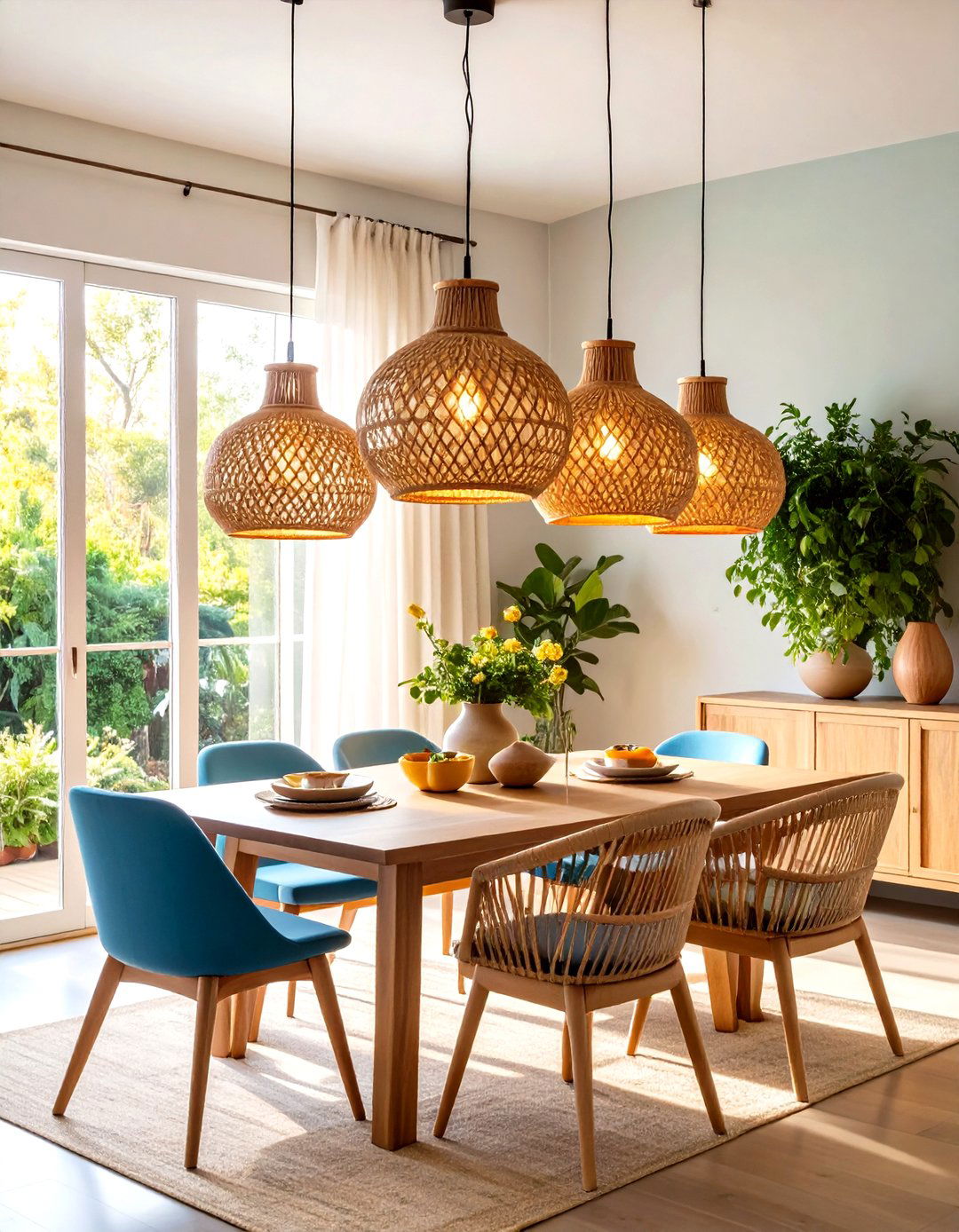
Hand-woven rattan domes throw lacy shadows that animate plain ceilings at night. Their renewable fibers and artisanal provenance dovetail with the sustainable ethos of organic modern interior design. Opt for oversized shades above a dining table to rival chandeliers without visual heaviness; line interiors with fabric diffusers for glare-free meals.
21. Celebrate Wabi-Sabi Pottery
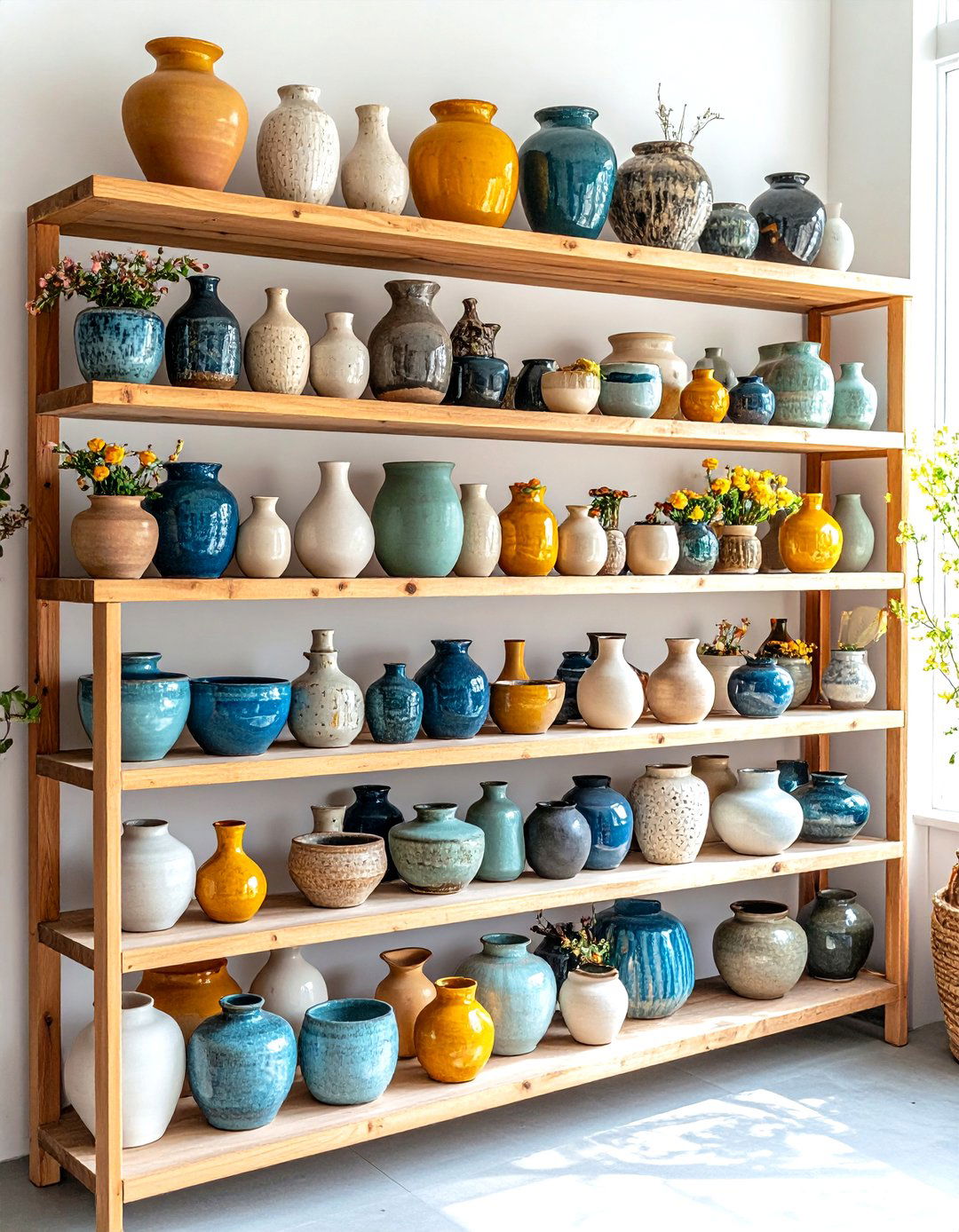
Display a trio of irregular stoneware vases — drips, cracks, and all — to emphasize beauty in imperfection. Matte glazes absorb light, supplying contrast against polished marble or glass. Taller vessels double as sculptural bookends on open shelving, showcasing the artisanal heartbeat behind organic modern interior design.
22. Ground Spaces with Jute Rugs
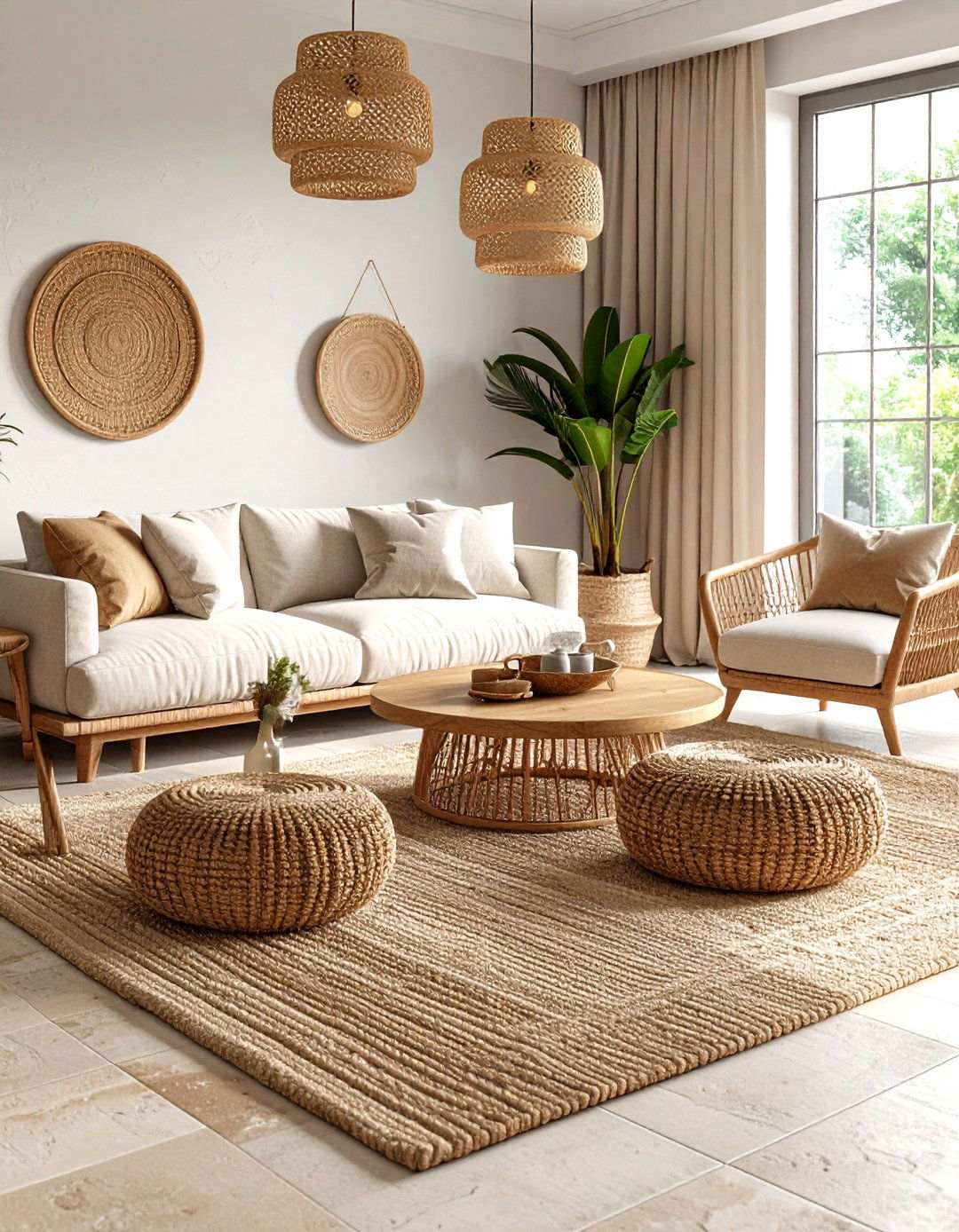
Hand-loomed jute rugs add under-foot texture, protect hardwoods, and biodegrade at end of life — sustainability made tangible. Their sandy tones bridge stone floors and upholstered seating, preventing the “furniture island” effect in open plans. Rotate seasonally to even wear; reversible weaves double lifespan and value.
23. Lay Handcrafted Terracotta Tiles
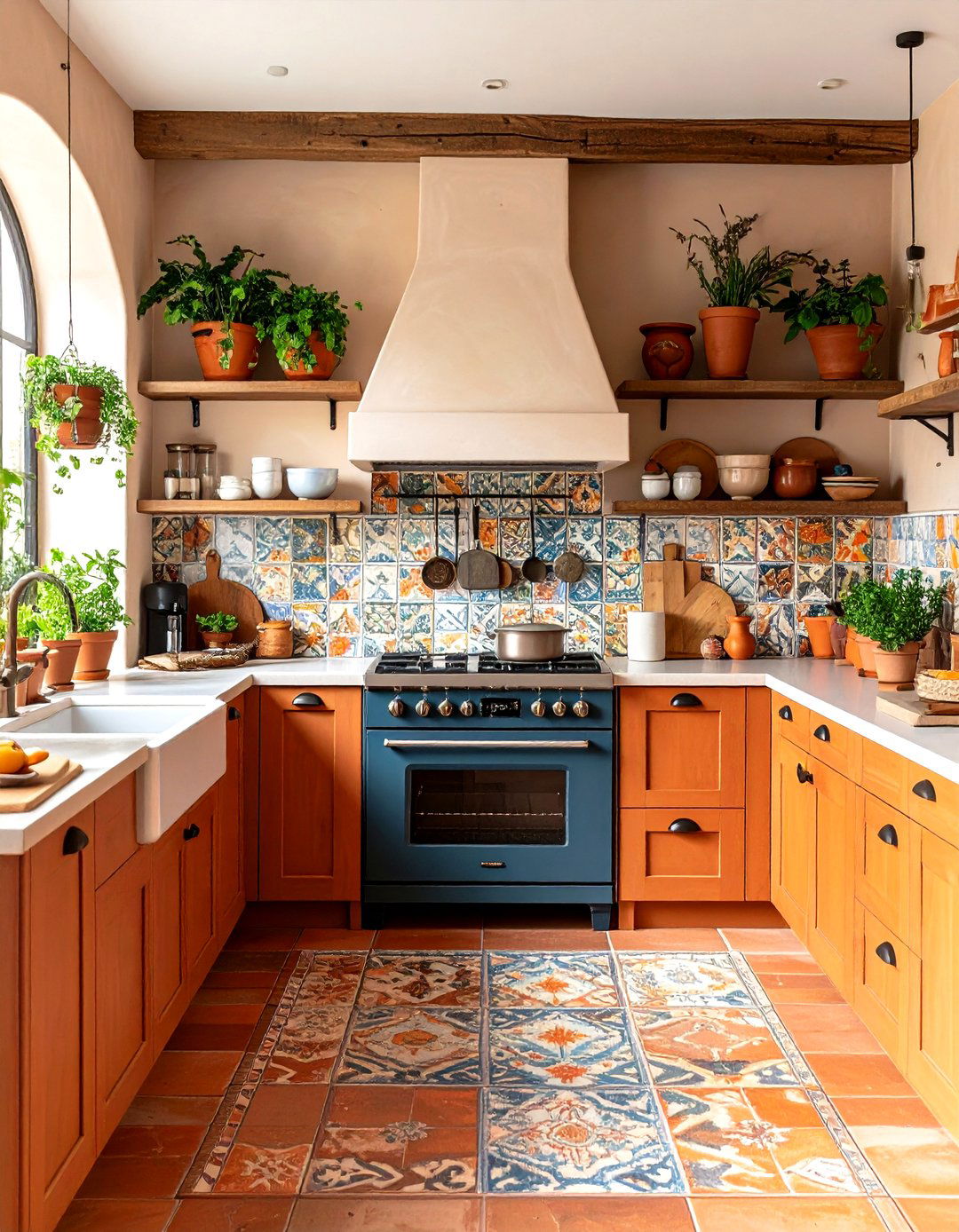
Terracotta zellige backsplashes or hearth surrounds deliver artisanal color variation and tactile warmth. Fired at low temperatures, these tiles carry micro-pits that catch glaze in unpredictable ways — each surface a miniature sunset. Seal with breathable wax to enhance patina while allowing moisture exchange, ideal for humid kitchens.
24. Hang Organic-Shaped Mirrors
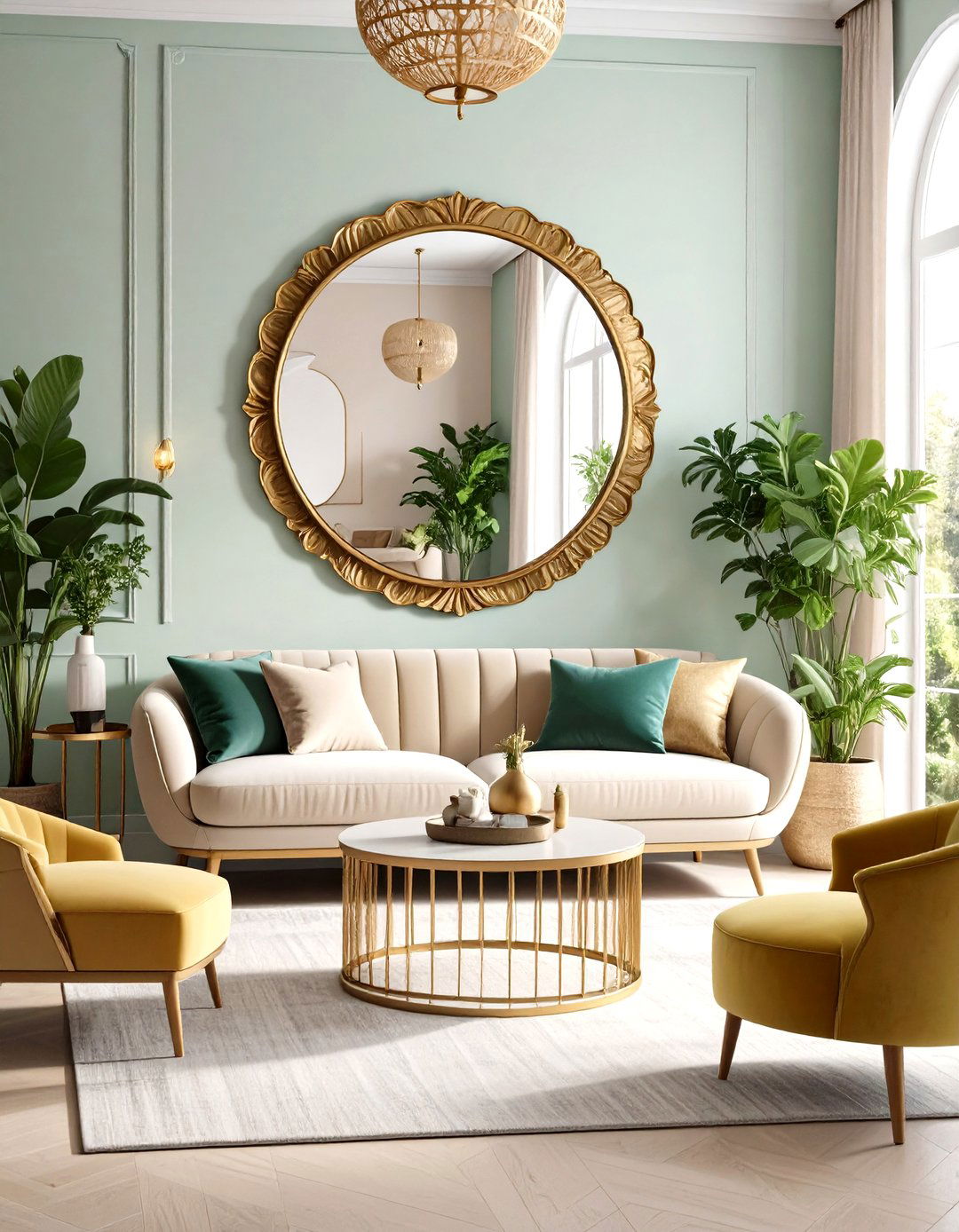
Wavy or asymmetrical mirrors echo river stones, softening hard edges and bouncing daylight deeper into rooms — boosting the airy quality prized in organic modern interior design. Choose slim metal frames in muted brass so reflections, not hardware, star. Mount over consoles to mimic natural pools and draw the eye upward.
25. Embrace Operable Windows for Natural Ventilation

Cross-ventilation achieved through strategically placed casement or awning windows slashes cooling loads, reduces indoor pollutants, and reconnects occupants with ambient sounds — rain, birds, rustling leaves. Target at least 20 percent operable glazing in new builds for optimal airflow. Modern concealed hardware keeps lines clean while empowering users to fine-tune comfort.
Conclusion:
Organic modern interior design succeeds when every element — structural timber, living greenery, textured textiles, and handcrafted accents — works in quiet harmony. By weaving together these 25 ideas, you’ll craft rooms that feel simultaneously sophisticated and soul-soothing, proving that contemporary design can honor nature without sacrificing innovation.


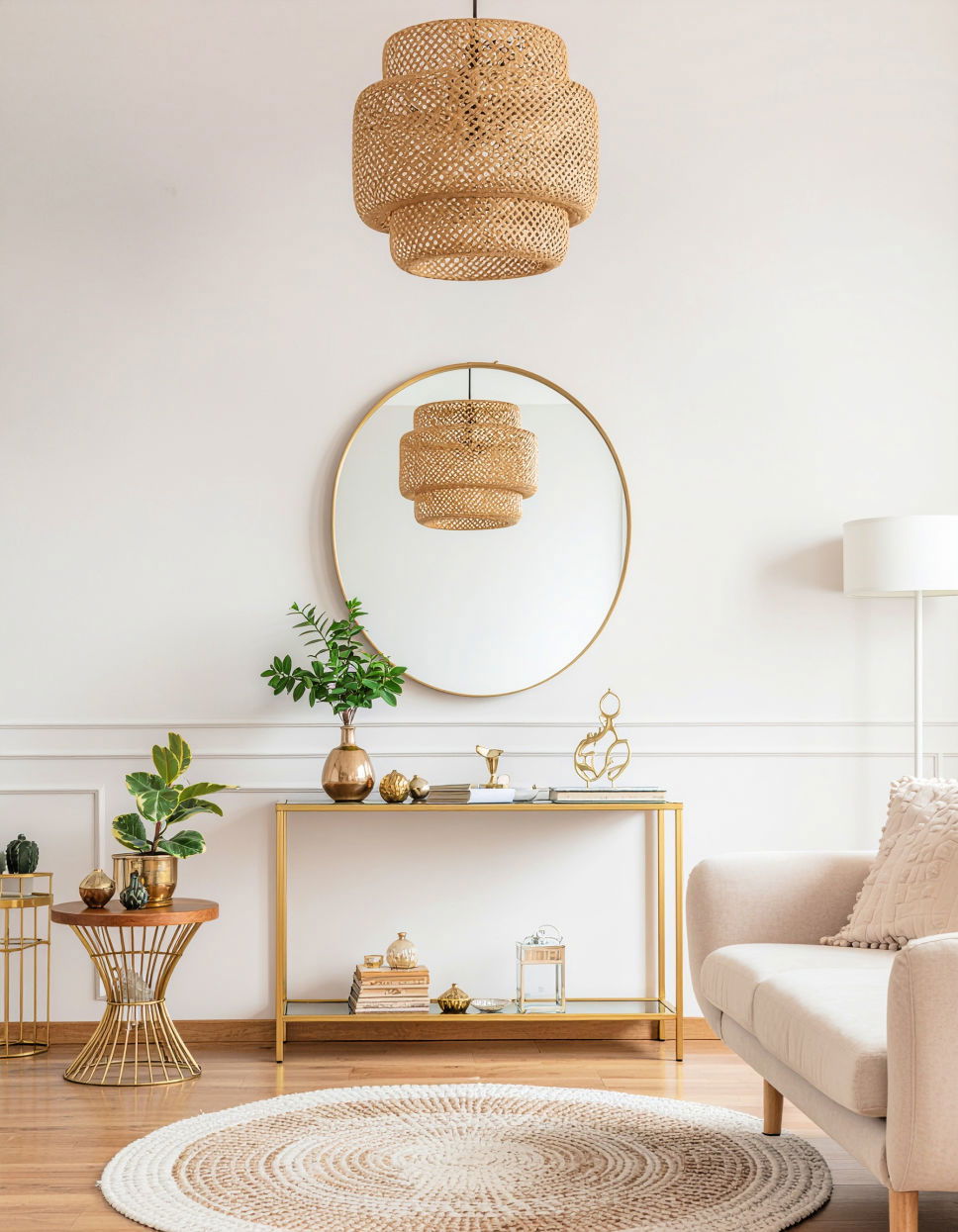
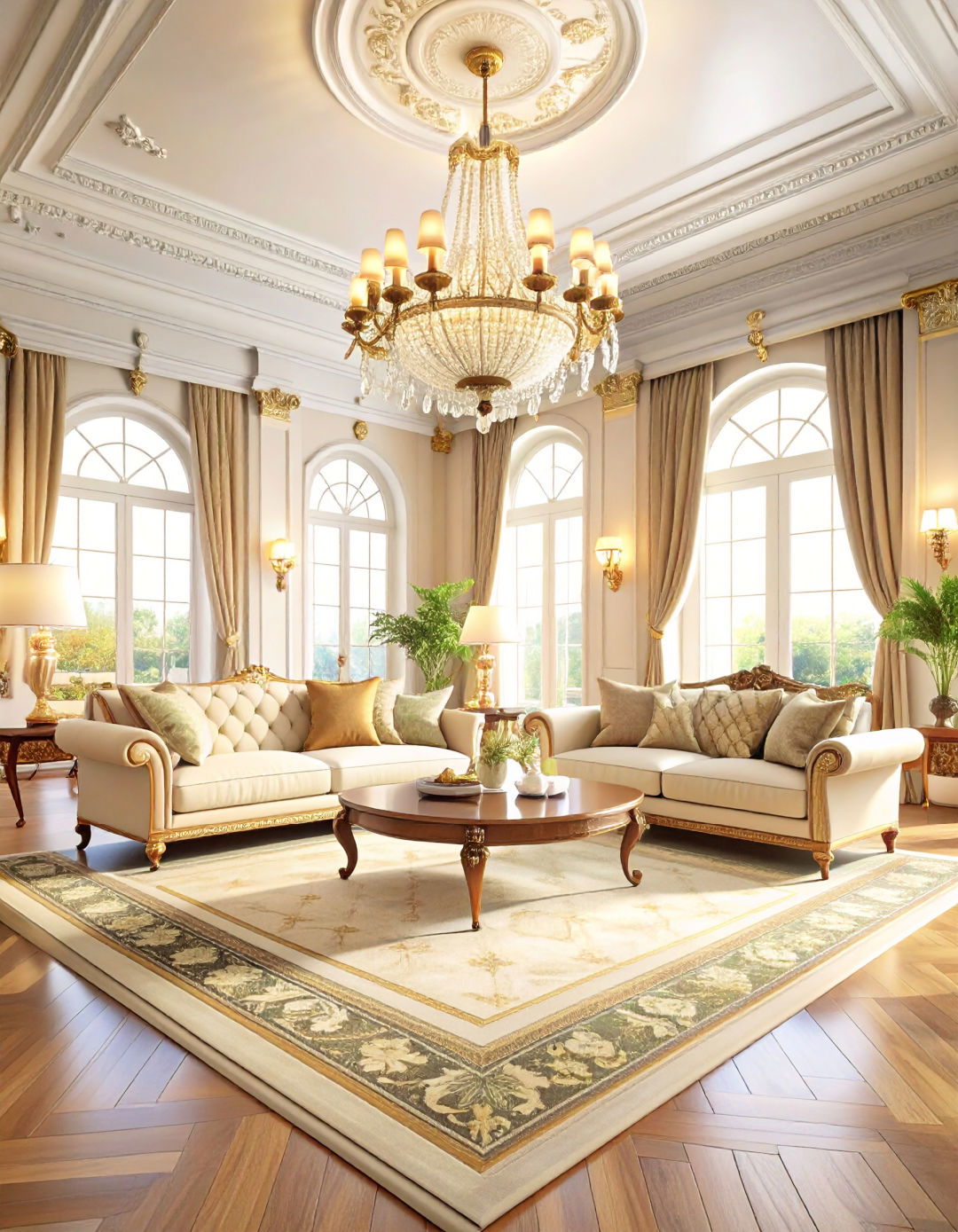

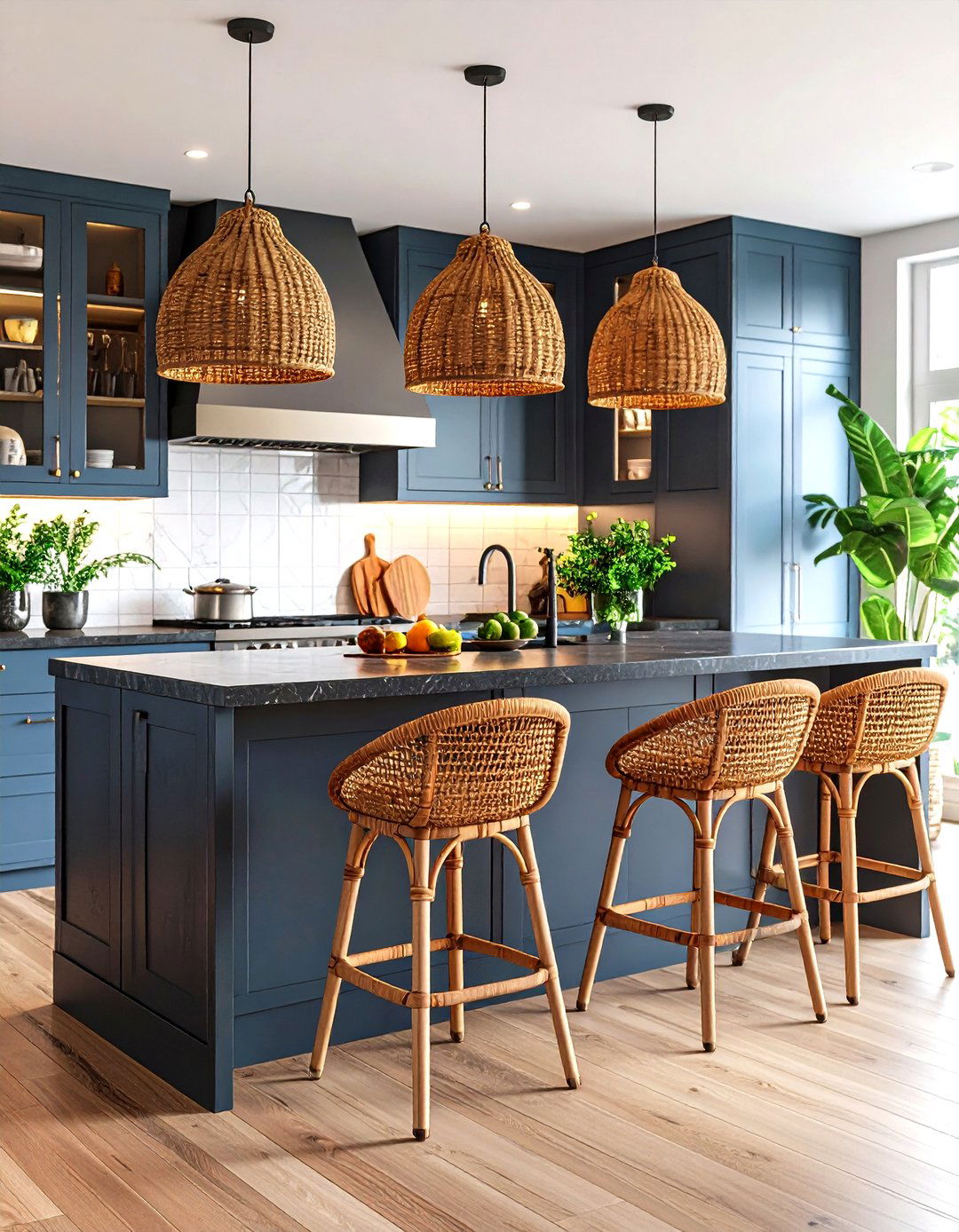
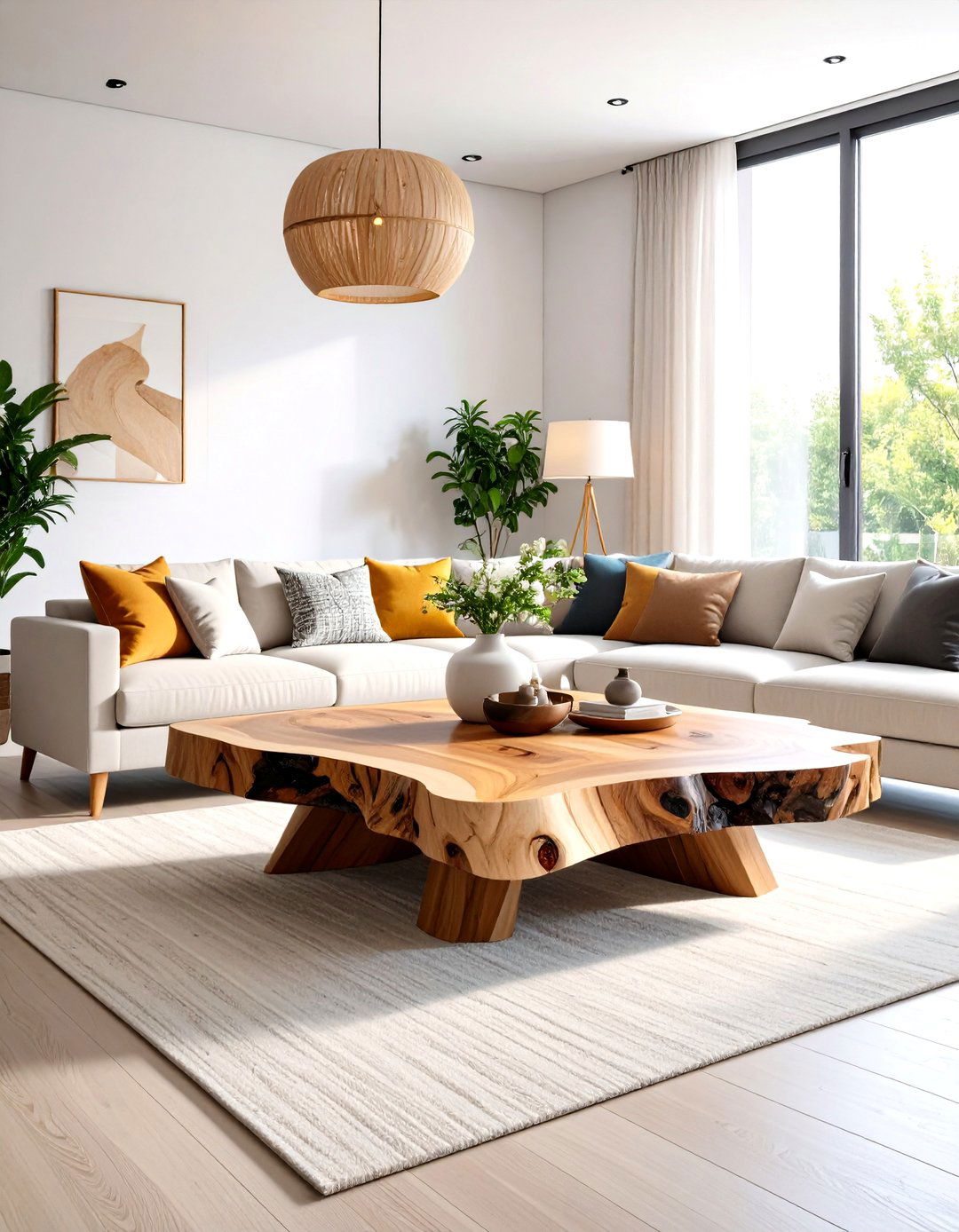

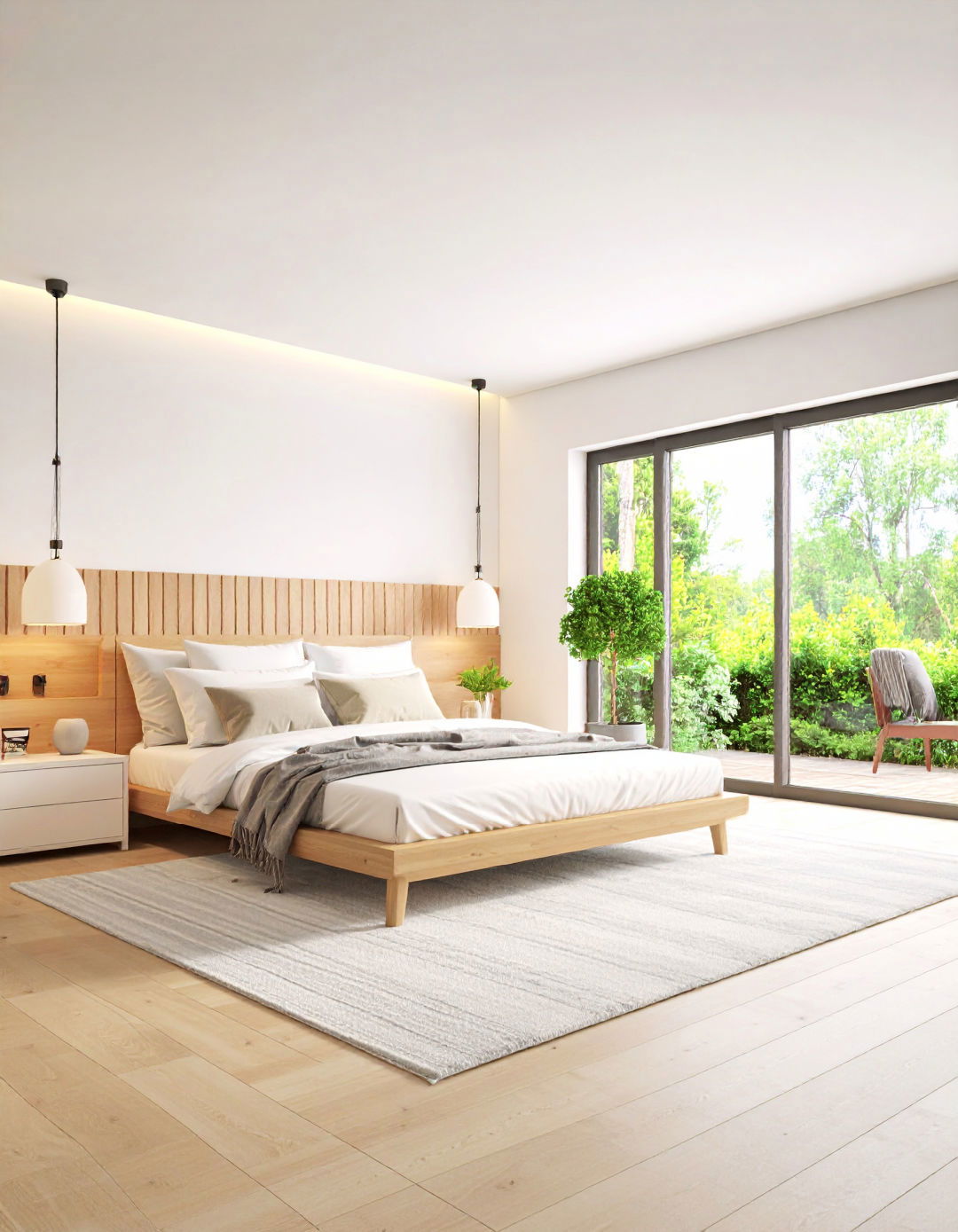
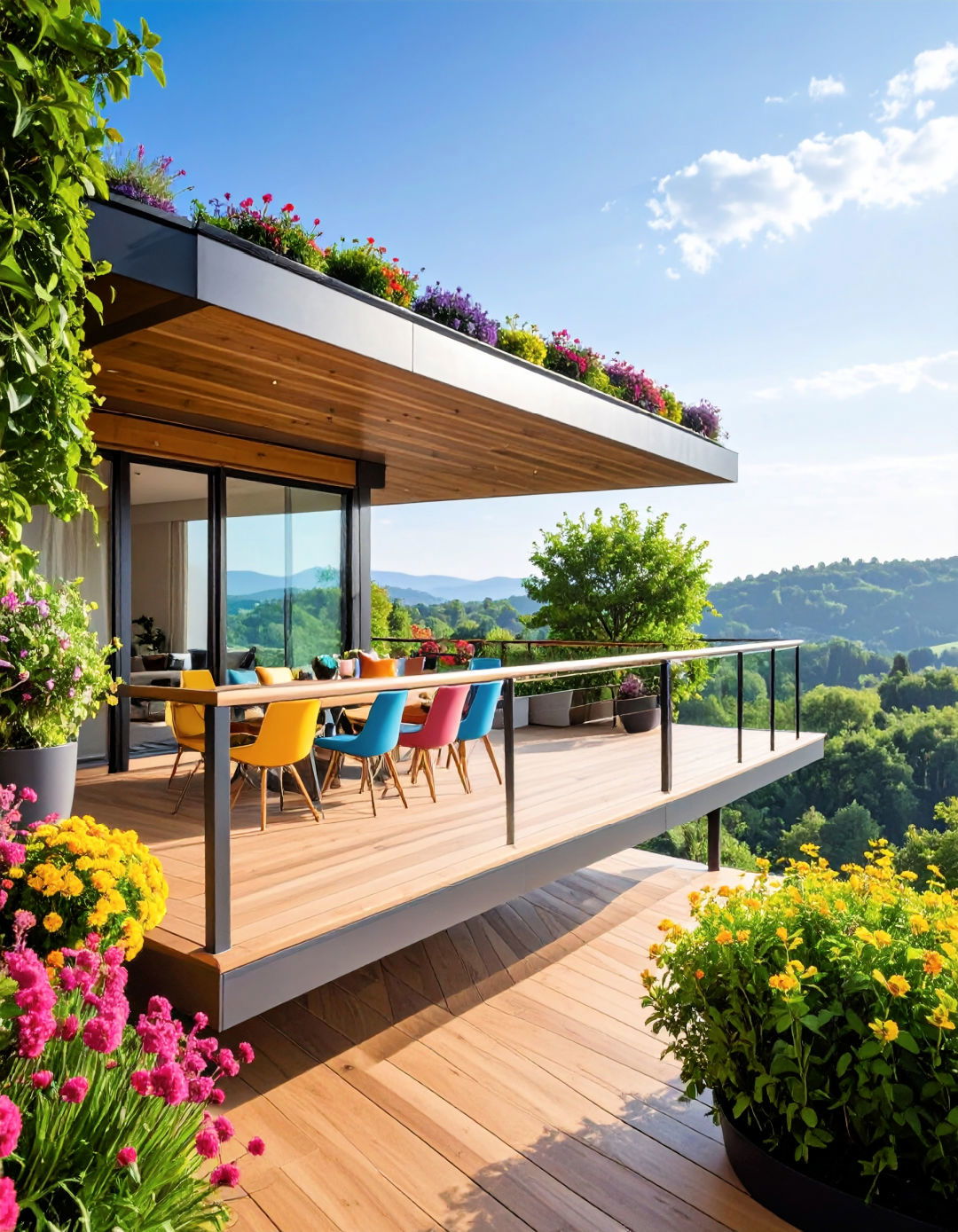
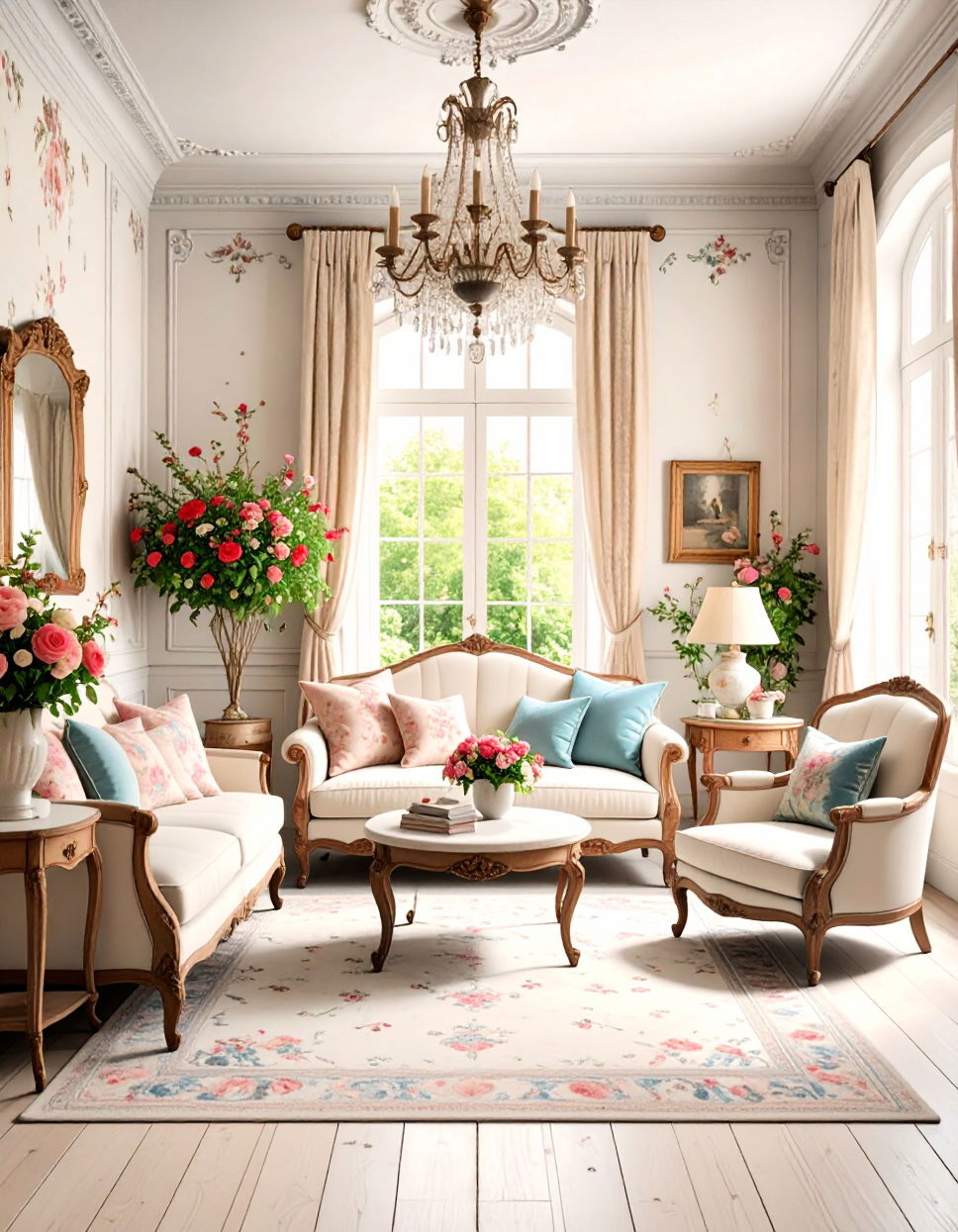
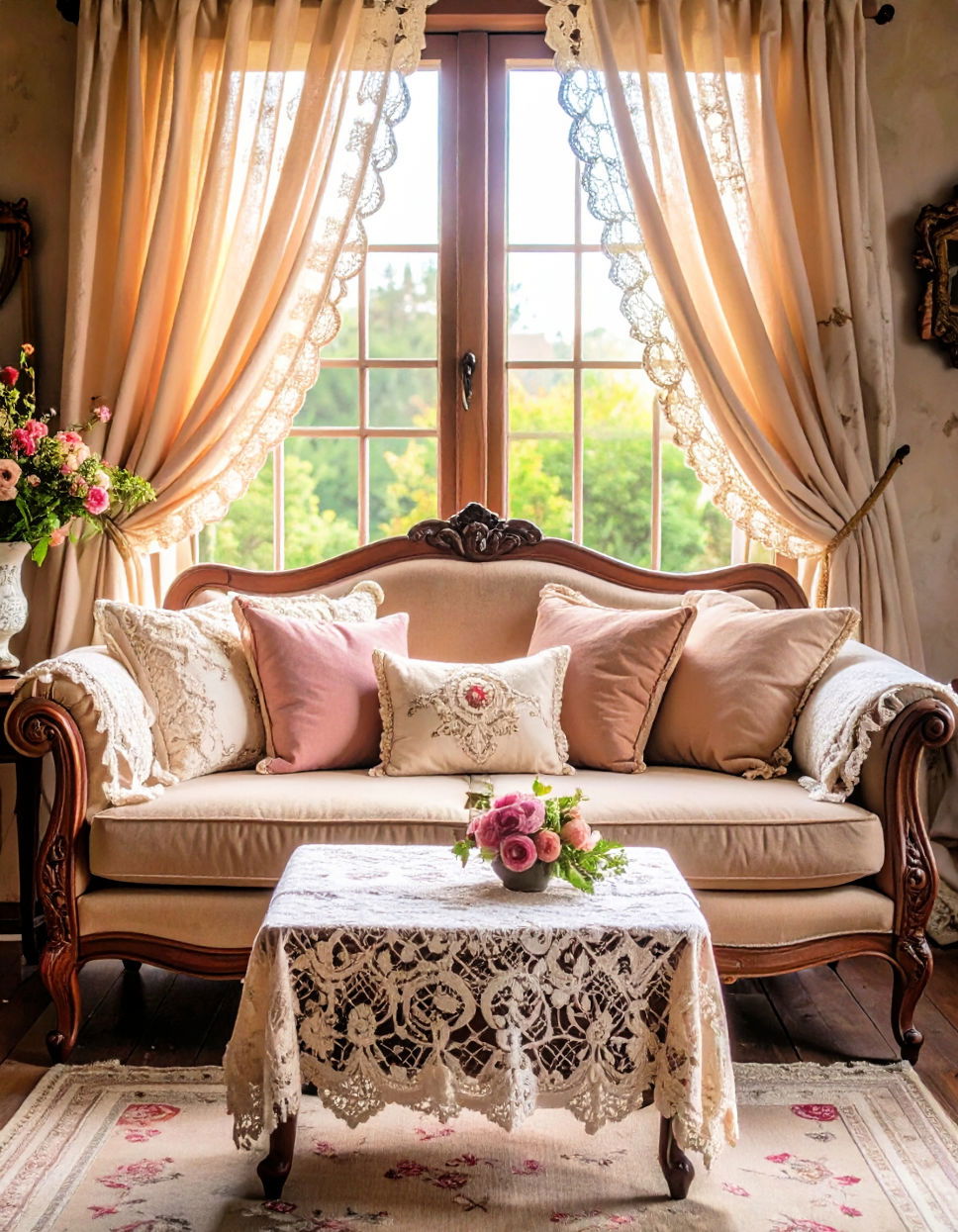
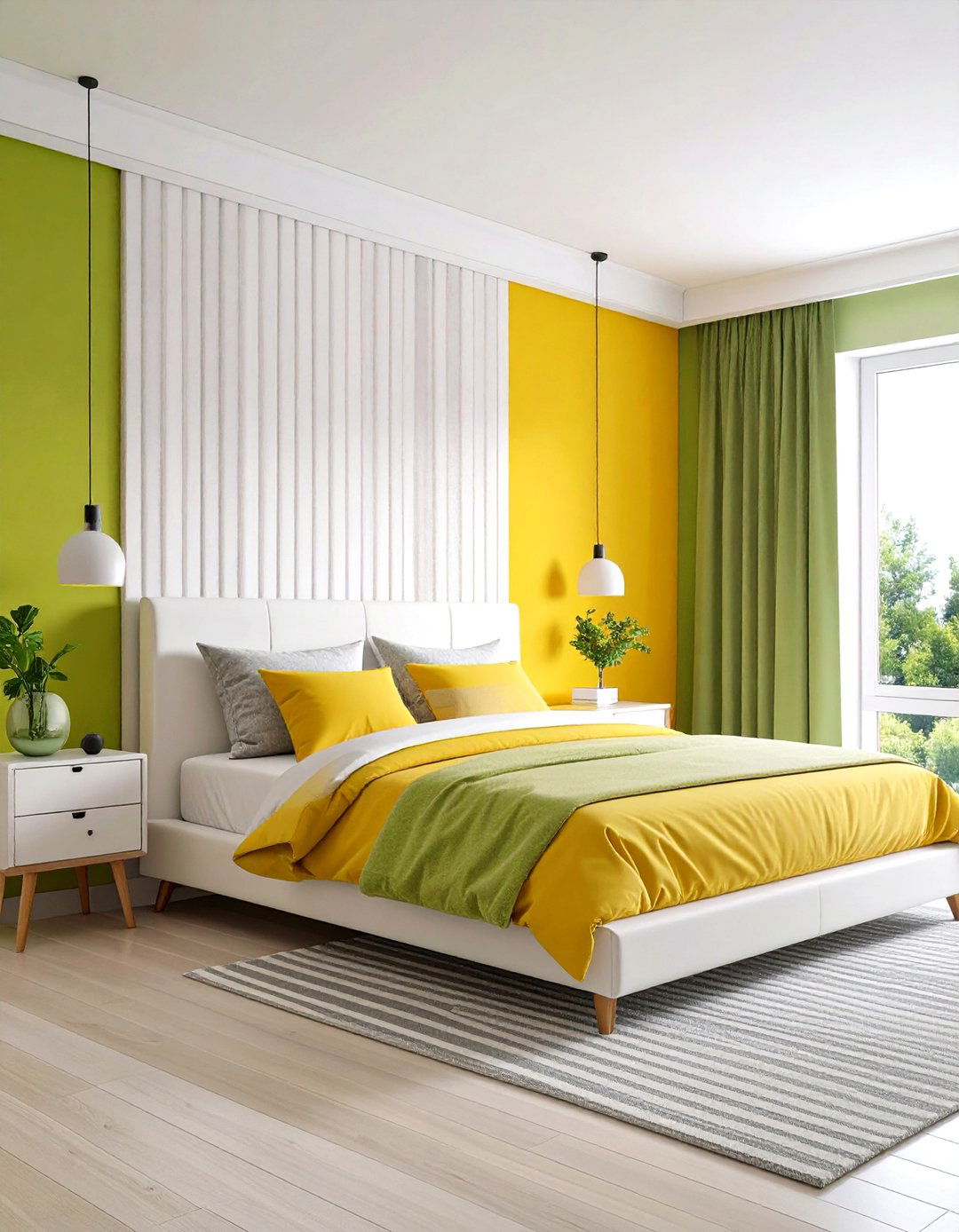
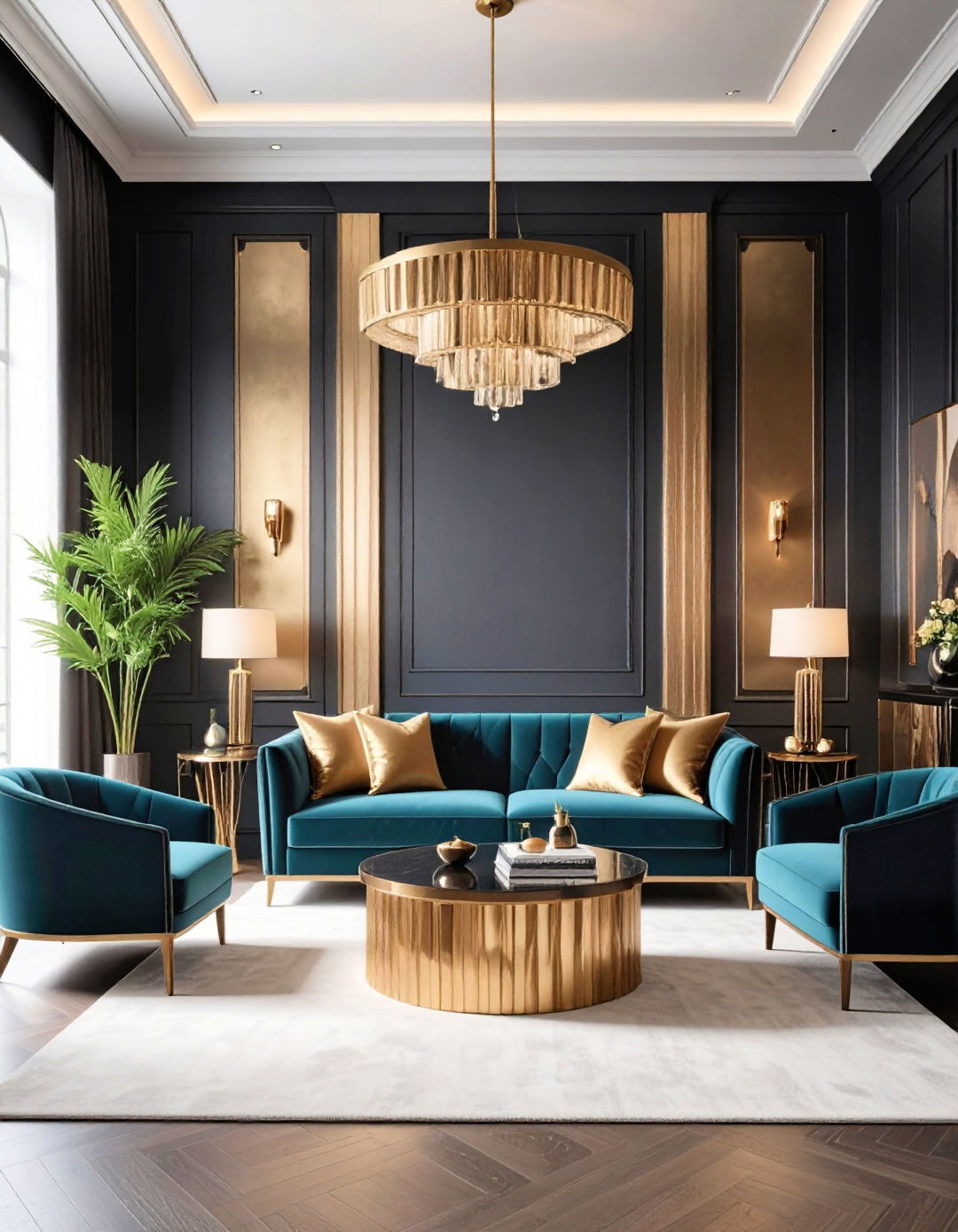
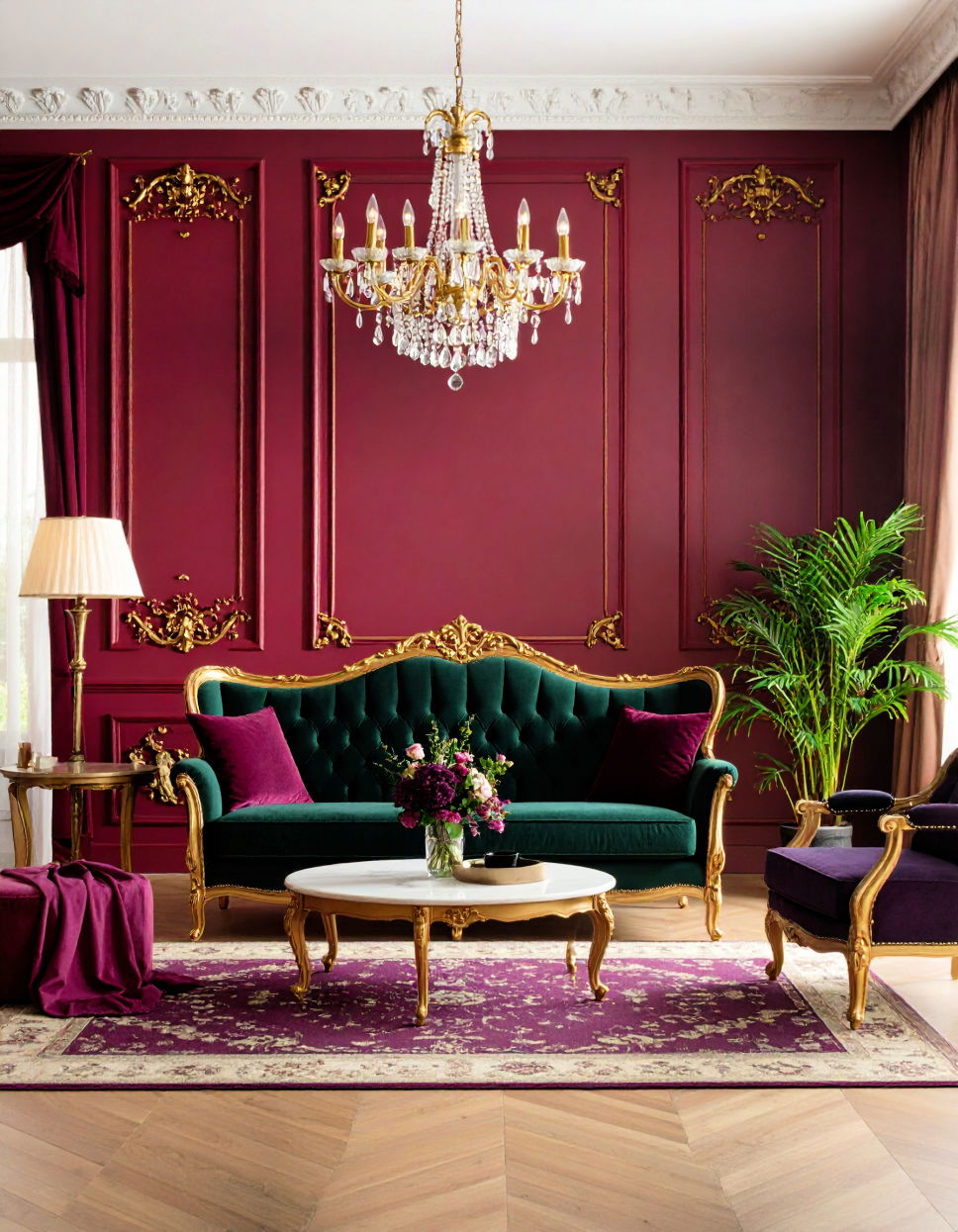

Leave a Reply